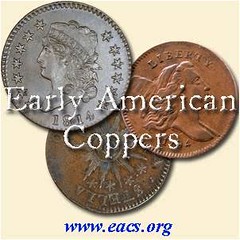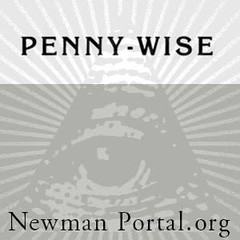
About UsThe Numismatic Bibliomania Society is a non-profit organization devoted to the study and enjoyment of numismatic literature. For more information please see our web site at coinbooks.org SubscriptionsThose wishing to become new E-Sylum subscribers (or wishing to Unsubscribe) can go to the following web page link MembershipThere is a membership application available on the web site Membership Application To join, print the application and return it with your check to the address printed on the application. Print/Digital membership is $40 to addresses in the U.S., and $60 elsewhere. A digital-only membership is available for $25. For those without web access, write to: Terry White, Treasurer AsylumFor Asylum mailing address changes and other membership questions, contact Terry at this email address: terrywhite5475@yahoo.com SubmissionsTo submit items for publication in The E-Sylum, just Reply to this message, or write to the Editor at this address: whomren@gmail.com BUY THE BOOK BEFORE THE COINSale Calendar |
- WAYNE'S WORDS: THE E-SYLUM JANUARY 29, 2017
- BOOK REVIEW: COINS OF THE ROMAN EMPIRE
- MARVIN TAMEANKO (1934-2016)
- J.S.G. BOGGS (1955-2017)
- DICK PUNCHARD IS ALIVE AND WELL
- NEWMAN PORTAL DIGITIZES STACK'S CATALOGS
- LEE LAWRIE AND THE ROOSEVELT DIME
- MARTINUS SCRIBLERUS ON THE CONNECTICUT COPPERS
- NOTES FROM E-SYLUM READERS: JANUARY 29, 2017
- ON THE SPEED OF ELECTRONIC PUBLISHING
- ON VANISHING NUMISMATIC WEBSITES
- MORE ON JERNEGAN'S LOTTERY MEDAL
- QUERY: DATING HEEREN BROTHERS BADGES
- VOCABULARY TERM: MAP SHAPE
- DEMETRIUS T. EATON (1855-1920)
- ARTICLE PROFILES W. DAVID PERKINS
- BUILDING THE LILLY COLLECTION, CONTINUED
- CNG'S TRITON XX SALE PRICES REALIZED
- DIX NOONAN WEBB MARCH 2017 SALE HIGHLIGHTS
- ALEXANDER MACOMB GOLD MEDAL REOFFERED
- ARCHIVES INTERNATIONAL SALE 38 ANNOUNCED
- NUMISMATIC NUGGETS: JANUARY 29, 2017
- THE 2017 AMERICAN NUMISMATIC SOCIETY GALA
- MONEYERS AND DEBASEMENT IN MEDIEVAL ENGLAND
- THE 1632 PURIM TALERS
- LORD CLIVE RECOVERY TO BEGIN FEBRUARY 2017
- THE FIRST 1794 DOLLAR RELEASED
- HOW AMERICA PAID FOR THE CIVIL WAR
- THE RECTOVERSO TECHNIQUE ON INDONESIAN BANKNOTES
- AFGHANISTAN PLAGUED WITH OLD WORN BANKNOTES
Click here to access the complete archive
To comment or submit articles, reply to whomren@gmail.com
Content presented in The E-Sylum is not necessarily researched or independently fact-checked, and views expressed do not necessarily represent those of the Numismatic Bibliomania Society.
WAYNE'S WORDS: THE E-SYLUM JANUARY 29, 2017
New subscribers this week include: Nicole Fry of Washington University in St. Louis, courtesy of Len Augsburger; Brad Yonaka, courtesy of David Schwager; and Giordano Sereno. Welcome aboard! We now have 2,158 subscribers.
Thanks also to our advertisers who help support this free publication. Remember that you can click on their ads to go to their web sites for more information on current offerings and upcoming sales.
This week we open with one book review, two obituaries and one non-obituary, followed by the latest update from the Newman Numismatic Portal.
Other topics this week include sculptor Lee Lawrie, a contemporary account of the Connecticut Coppers, electronic publishing and vanishing websites, Jernigan's Lottery medal, recent and upcoming coin auctions, coinage debasement in medieval England, the 1632 Purim talers, the first 1794 dollars and the 1796 blockheads.
To learn more about Marvin Tameanko, Dick Punchard, J.S.G. Boggs, Martinus Scriblerus, Pol Dom, Demetrius T. Eaton, Dave Perkins, Amon Carter, Jr., Eric Bloodaxe, the All Russian Central Union of Consumer Societies, the E Pluribus Venom Note, the Rectoverso Technique (no, it's not dirty), and getting the 'h" out of Pittsburgh, read on. Have a great week, everyone!
Wayne Homren
Editor, The E-Sylum
BOOK REVIEW: COINS OF THE ROMAN EMPIRE
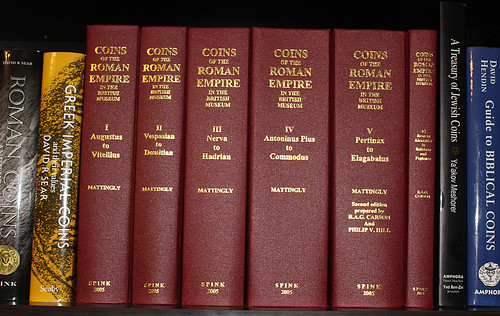
As I stated in a previous thread on a different topic, I received a big heavy package in the mail today. I was happy to open it and find the 2005 Spink and Son edition of the BMC.
The 2005 Spink edition is bound in red cloth with gold spine lettering and is limited to only 350 copies (plus an additional 5 copies bound in leather). In the original editions and reprints volumes IV and V were each divided into two books, but both volumes are now contained in a single book. They were printed by Cambridge University Press who devised a method of reproducing the plates that they claim make them "as good as the originals).
PUBLICATION HISTORY:
Vol. I by Harold Mattingly
Originally Published 1923
British Museum Press reprint 1965
Spink & Son reprint 2005
Vol. II by Harold Mattingly
Originally Published 1930
British Museum Press reprint 1966
Spink & Son reprint 2005
Vol. III by Harold Mattingly
Originally Published 1936
British Museum Press reprint 1966
Spink & Son reprint 2005
Vol. IV by Harold Mattingly
Originally Published 1940
British Museum Press reprint 1968 and 1976
Spink & Son reprint 2005
Vol. V by Harold Mattingly with the Second Edition being prepared by R.A.G. Carson and Philip Hill
Originally Published 1950
British Museum Press Second Edition 1975
Spink & Son reprint 2005
Vol. VI by R.A.G. Carson
Originally Published 1962
British Museum Press reprint 1976
Spink & Son reprint 2005
Harold Mattingly died in 1964 and as a result work on the BMC came to an end and it is highly likely that this set will never be completed after the passage of so much time. There is no coverage of coins minted after AD 238, so if you collect later Roman coins this set will be of little interest to you.
COMPARISON OF THE REPRINTS:
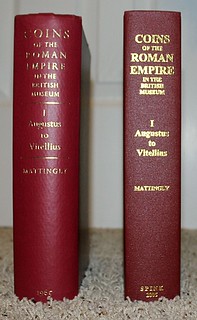 About a week ago I started a discussion on the merits of the 1960s reprints vs. the 2005 reprints. In that thread no one stepped forward with experience using both sets, so I was not able
to decide which set was superior. I am going to offer my opinion here and to share a few photos from each set in the hopes that it might prove useful to someone considering one or more volumes of BMC
in the future.
About a week ago I started a discussion on the merits of the 1960s reprints vs. the 2005 reprints. In that thread no one stepped forward with experience using both sets, so I was not able
to decide which set was superior. I am going to offer my opinion here and to share a few photos from each set in the hopes that it might prove useful to someone considering one or more volumes of BMC
in the future.
I am going to be using the 1965 and 2005 editions of Volume I to make my comparisons. The first thing you will notice from the photo above is that the earlier British Museum reprint is about a half inch thicker than the Spink reprint. The 2005 is bound in a cloth cover that feels superior in quality to the older book, but unlike the older ones the 2005 is issued without dustjakets. Both editions have sewn bindings, but again the 2005 seems to be constructed better, which since it is printed and bound by Cambridge University Press is no suprise.
To read the complete article, see:
Coins of the Roman Empire in the British Museum (Comparison With Photos)
(www.cointalk.com/threads/coins-of-the-roman-empire-in-the-british-museum-comparison-with-photos.290124/)
MARVIN TAMEANKO (1934-2016)
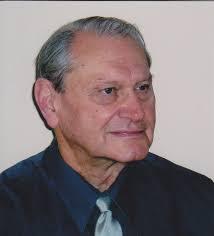 Marvin Tameanko was Emeritus Professor at the Faculty of Architecture, Ryerson Polytechnic University, Toronto. He was a frequent contributor to a number of numismatic magazines, including
the English COIN News through which we first made contact over 15 years ago. He wrote Monumental Coins, a work detailing ancient coins showing buildings and other edifices, which won a
NLG Award in its year of publication.
Marvin Tameanko was Emeritus Professor at the Faculty of Architecture, Ryerson Polytechnic University, Toronto. He was a frequent contributor to a number of numismatic magazines, including
the English COIN News through which we first made contact over 15 years ago. He wrote Monumental Coins, a work detailing ancient coins showing buildings and other edifices, which won a
NLG Award in its year of publication.
Somehow the photography of coins was what joined us up. We exchanged information and, I would like to think, became long-distance friends. He even wrote a paper for Mintmark, the magazine of the Numismatic Society of Auckland on some of his family history about Napoleon's retreat from Moscow – delighted that his grandmother's tale was proved correct.
We had a vigorous debate on the False Shekels, of which we both had more than one. He also gave me a few specimens, including some clipped siliquae, for which he drew beautiful illustrations. His article on these was published in the English COIN News, January 1996. Marvin was also interested in ancient ships and built a number of intricate models of the galleys of old, again to illustrate a booklet he had written.
We had a sort of contest to see who could send Christmas greetings latest – my 2016 greetings went out just two days before. There was no answer. Early this year I heard from Mrs Tameanko that he had passed away. A good friend, never met, but well-remembered.
To read Tameanko's online obituary, see:
Marvin TAMEANKO
(www.legacy.com/obituaries/nationalpost/obituary.aspx?page=lifestory&pid=183115520)
To read some of Tameanko's articles, see:
LIVIA - THE FIRST AUGUSTA OF ROME (http://coinproject.com/jan/volume1/issue4/volume1-4-1.html)
NOAH AND THE ARK ON ANCIENT COINS (www.theshekel.org/article_noahs_ark.html)
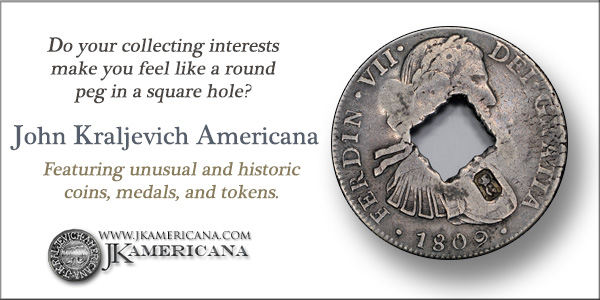
J.S.G. BOGGS (1955-2017)
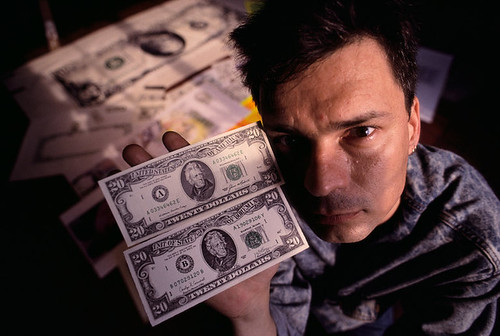
Sitting in a Chicago diner in 1984, the artist Stephen Boggs began doodling on a paper napkin as he consumed a coffee and a doughnut. He started with the numeral 1, then transformed it into the image of a dollar bill.
His waitress, impressed, offered to buy it. Mr. Boggs refused, but presented it in payment for his 90-cent tab. The waitress handed him 10 cents in change.
An idea was born.
For the next three decades, Mr. Boggs, better known by his artistic signature, J. S. G. Boggs, kept money on his mind. Extending the logic of the diner transaction, he painstakingly reproduced British pounds, Swiss francs and American dollars, with quirky deviations.
On American currency, for example, he might use the signature “J. S. G. Boggs, Secret of the Treasury,” or inscribe “Kunstbank of Bohemia” on a $5,000 bill, or append the motto “In Fun We Trust.” At first he created the notes one by one, a time-consuming process. Later he ran off limited-edition prints.
He presented his currency to merchants as payment for goods and services. If the bills were accepted, he asked for a receipt and, when appropriate, change. He noted the details of each transaction on the backs of his “Boggs bills,” which were blank, and sold the receipts to collectors. It was up to them to track down the merchant — for a fee, Mr. Boggs would assist — and negotiate purchase of the note.
Mr. Boggs never sold his bills. He only spent them.
The assembled elements were, in the opinion of Mr. Boggs and his admirers, artworks, exhibited as such in galleries around the world and included in the collections of the Art Institute of Chicago, the Museum of Modern Art in New York and the Smithsonian American Art Museum in Washington.
“I create images that say things and ask things,” Mr. Boggs said in the 2013 Discovery Channel documentary “Money Man.” “I take them out into the real world and try to spend them, not as counterfeits, but as works of art that ask us about the nature of money.”
Law enforcement agencies in several countries took a different view. They regarded Mr. Boggs as a forger. They expressed this opinion, on several occasions, by seizing the notes or putting Mr. Boggs on trial.
The Tampa police discovered Mr. Boggs's body on Sunday in a motel near the Tampa airport. He was 62. Robert Salmon, manager of operations for the Hillsborough County Medical Examiner's Office, said the cause of death had not been determined.
He was born Stephen Litzner in Woodbury, N.J., on Jan. 16, 1955. (He later added the names James and George.) His mother, the former Marlene Dietrich Hildebrandt, divorced his father when Stephen was an infant, and nothing is known about him.
She joined a carnival, performed as “Margo, Queen of the Jungle,” and in 1961 married a Tampa businessman, Jim Boggs, with whom she ran the Brahman Lounge, a bar and package store. She later wrote a neighborhood column for The Tampa Tribune, reporting on the doings in Brandon, the Tampa suburb where she lived.
Mr. Boggs attended Brandon High School but was expelled in his junior year. “I was accused of starting a riot in the auditorium, but it was somebody else who threw the book at the principal,” he told the journalist Lawrence Weschler, who wrote a profile of Mr. Boggs for The New Yorker in 1988 that evolved into a book, “Boggs: A Comedy of Values,” published in 1999.
Over the years, Mr. Boggs, who leaves no immediate survivors, traded his bills for goods and services, from candy bars to motorcycles, whose worth he estimated at several million dollars.
In the mid-1990s, when Worth magazine asked him to design a note using the Treasury Department's new guidelines, Mr. Boggs produced a $100 bill with the image of Harriet Tubman as a young girl, anticipating by 20 years the announcement that Tubman would replace Andrew Jackson as the new face of the $20 bill. In 2001, he ran off a series of 100,000 plastic Sacagawea dollars, stamped with his own mint marks and paid for with a $5,000 Boggs bill.
As Weschler told artnet News by phone:
“I wouldn't have put it past Boggs to have faked his own death. I had a fantasy of him off in Switzerland, having a great time reading the obituaries. That would have been like him. He was an amazing trickster, a vivid, vivid character, and a consummate transgressor.
There were times when you weren't quite sure whether he was still in on the joke, if you will, because it was a very serious joke for him. He could seem authentically dumbfounded whenever he got arrested for counterfeiting.
He was just short of being a con man, but no more than anyone in the art world, or for that matter in the world of finance, which of course, was his whole point.”
To read the complete article, see:
J.S.G. Boggs, Who Negotiated Purchases With Drawings of Money, Has Died at 62
(https://news.artnet.com/art-world/jsg-boggs-money-artist-died-62-828554)
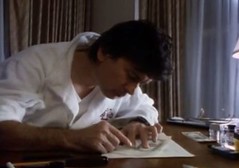
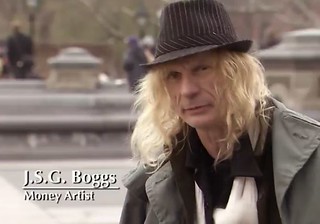
I reconnected with Boggs recently and had a long phone conversation with him last year. We didn't talk about his recent troubles, which included a stint in jail which I believe was for violation of his parole terms following a drug conviction.
We talked at length about the U.S. Treasury's selection of Harriet Tubman and his depiction of her twenty years ago on the Women's Series note he designed for Worth magazine. He seemed to expect an upcoming outpouring in interest in his work and hinted of legal action against the government. He encouraged me to begin drafting an article about my collecting of his work for future sale to a national publication.
He was always a dreamer and an artist to the core. He had his personal demons, and was the very model of the classic tortured artist. I liked to say that he danced in the grey area at the edge of the law, a silver-tongued con man who could talk his way in or out of any situation.
I met his mother Marleen a few times, and she was a wonderful lady. I never asked about her carnival days, and maybe it's just as well. His waitress story may be apochrophal, and for all we know Margo, Queen of the Jungle was, too. While working in London I checked with the British Museum, which he'd said had acquired a piece of his art. They had no record of it. I later checked the online catalog of the Art Institute of Chicago, and came up empty there. I'm sure there are museums that hold his work, but I would be sure to verify such claims. He's left behind an interesting body of work and a story like no other.
Knowing him, he would have preferred being shot off a barstool by a jealous husband, one last act of performance art. Time will tell what becomes of his reputation as an artist. With all the articles, books, court records and documentaries there is no shortage of information about his work and antics, even if Boggs the person remains an enigma. To those of us who knew him, he's unforgettable. -Editor
To read the complete article, see:
J.S.G. Boggs, Artist, Dies at 62; He Made Money. Literally.
(www.nytimes.com/2017/01/27/arts/design/jsg-boggs-dead.html?_r=0)
To read earlier New York Times articles, see:
Exploring New Dimensions in Realm of the Coin
(www.nytimes.com/1991/11/17/nyregion/exploring-new-dimensions-in-realm-of-the-coin.html)
The Long Arm of the Law Reaches Into the Gallery
(www.nytimes.com/2001/07/15/nyregion/art-the-long-arm-of-the-law-reaches-into-the-gallery.html)
To read earlier E-Sylum articles, see:
NUMISMATIC LITERATURE AT MEMPHIS (http://coinbooks.org/esylum_v04n22a09.html)
BOGGS IN BERLIN (www.coinbooks.org/esylum_v04n23a12.html)
BOGGS/HIPSCHEN ART EVENT (www.coinbooks.org/esylum_v05n42a04.html)
UPDATE: MONEY ARTIST J.S.G. BOGGS (www.coinbooks.org/esylum_v08n15a17.html)
J.S.G. BOGGS EXHIBIT OPENING IN SEPTEMBER (www.coinbooks.org/esylum_v09n35a09.html)
WORKS BY MONEY ARTIST J.S.G. BOGGS EXBITED IN BEIJING (www.coinbooks.org/esylum_v13n34a19.html)
THE DISCOVERY CHANNEL'S SECRET LIFE OF MONEY (www.coinbooks.org/esylum_v16n10a19.html)
VIDEO OF MONEY ARTIST J.S.G. BOGGS (www.coinbooks.org/esylum_v17n32a26.html)
NOTES FROM E-SYLUM READERS: AUGUST 10, 2014 (www.coinbooks.org/esylum_v17n33a08.html)
SELECTIONS FROM NUMISMATIC AUCTIONS SALE #58 (www.coinbooks.org/esylum_v18n48a31.html)
CONSIDERING THE CONTROVERSIAL J.S.G. BOGGS (www.coinbooks.org/esylum_v19n34a18.html)
THE HIDDEN MESSAGES OF J.S.G. BOGGS (www.coinbooks.org/esylum_v19n35a20.html)

DICK PUNCHARD IS ALIVE AND WELL
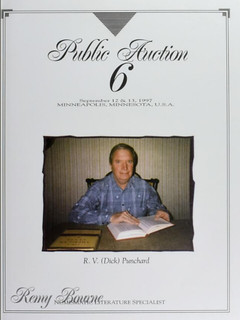 The Charlie Davis Mail Bid Sale of February 18, 2017 has a group of photos from “The Invasion of Louisville” as lot 572. A number of people attending are mentioned including Dick Punchard.
His name is in italics with the note, “Sadly in 28 years, we have lost those named in italics.”
The Charlie Davis Mail Bid Sale of February 18, 2017 has a group of photos from “The Invasion of Louisville” as lot 572. A number of people attending are mentioned including Dick Punchard.
His name is in italics with the note, “Sadly in 28 years, we have lost those named in italics.”
I am pleased to report that Dick is alive and well at age 84. I spoke with him on the phone for about an hour on Wednesday, January 25, 2017.
I met Dick more than 40 years ago. He introduced me to the Early American Coppers Club and was my mentor during the early years of my collection of large cents. We attended a number of EAC conventions together. Along with Wes Rasmussen, we also attended the important California copper sales in the 1980's.
Dick also introduced me to The Numismatic Bibliomania Society, He was a charter member. I might have been if Jack Collins had replied to my inquiry, but I missed out on that distinction.
Dick sold his library through an auction by Remy Bourne. He sold most of his large cents privately and I am fortunate to have a few of his 1793's in my collection. He dropped out of the NBS after selling his library.
In recent years he has been working on a book on the Minnesota G.A.R. posts and badges. This was published in October of 2016. I have ordered a copy and will report to The E-Sylum after I receive it.
To read the Bourne sale of the Punchard Library on the Newman Numismatic Portal:
Public Auction 6 (https://nnp.wustl.edu/library/auctionlots?AucCoId=510371&AuctionId=513014)
NEWMAN PORTAL DIGITIZES STACK'S CATALOGS
Newman Portal Digitizes Stack's Auction Sale Catalogs
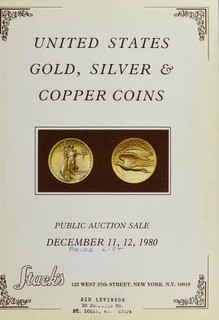 The Stack's series of auction sale catalogs, commencing in 1935 and numbering over 700 sales, represent a foundational core of American numismatic literature. Known as Stack's Bowers
Galleries beginning in 2011, this auction house has attracted premier consignments for multiple generations and engaged equally stellar specialists as catalogers for nearly every collecting
discipline within American numismatics. The result is an indispensible series of sale catalogs, many of which serve as standard references.
The Stack's series of auction sale catalogs, commencing in 1935 and numbering over 700 sales, represent a foundational core of American numismatic literature. Known as Stack's Bowers
Galleries beginning in 2011, this auction house has attracted premier consignments for multiple generations and engaged equally stellar specialists as catalogers for nearly every collecting
discipline within American numismatics. The result is an indispensible series of sale catalogs, many of which serve as standard references.
The Newman Portal has now posted over 200 of these, covering the period 1960-1980. The remainder will be added in the coming months. The Newman Portal acknowledges Stack's Bowers Galleries for their cooperation in facilitating this work.
Link to Stack's catalogs on the Newman Portal:
https://nnp.wustl.edu/library/auctioncompanydetail/3
Remember, only the 1960-1980 run is fully online. While other sales are listed on the portal, these are just placeholders awaiting scanning.
We can all be victims of expectations creep. As technology advances we become so quickly accustomed to the ready availability of certain features and content that we forget that such access didn't exist anywhere in the world until a few months ago, and complain when it's not instantly at our fingertips.
So wear your hard hat and watch your step while exploring a web site still under construction. -Editor

LEE LAWRIE AND THE ROOSEVELT DIME
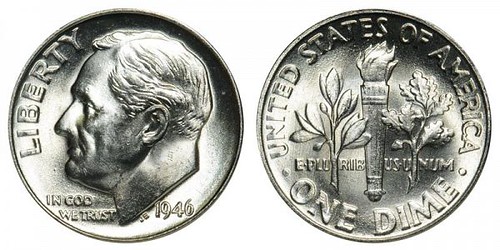
Dave Lange writes:
It's not too surprising that your tour guide was mistaken about Lee Lawrie having created the Roosevelt Dime, as the sculptor played a key role in its completion. The federal Commission of Fine Arts rejected John Sinnock's first submission for the portrait of FDR. Since Lawrie was the commission's sculptor member, he met with Sinnock and some Treasury officials at Lawrie's home and made suggestions that were incorporated into a second model. This, too, was rejected, so Sinnock again consulted with Lawrie. His third obverse design was approved by Lawrie, with subsequent approval by Treasury Secretary Fred Vinson. Lawrie had made his decision conditional upon the approval of the commission as a whole, but there was not time for it to meet before the Mint went ahead with the hubs and dies. The new coin was needed for release on January 30, FDR's birthdate.
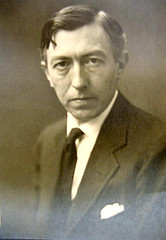 Lee Oscar Lawrie was born in Rixdorf, Germany, and came to the United States in 1882 as a young child, settling in Chicago. It was there, at the age of 14, that he began working for the
sculptor Richard Henry Park.
Lee Oscar Lawrie was born in Rixdorf, Germany, and came to the United States in 1882 as a young child, settling in Chicago. It was there, at the age of 14, that he began working for the
sculptor Richard Henry Park.
In 1892 he assisted many of the sculptors in Chicago, constructing the "White City" for the World's Columbian Exposition of 1893. Following the completion of the work at the Exposition, Lawrie returned East and became an assistant to William Ordway Partridge. The next decade found him working with other established sculptors: Augustus Saint-Gaudens, Philip Martiny, Alexander Phimister Proctor, John William Kitson and others. His work at the Louisiana Purchase Exposition, St Louis, 1904, under Karl Bitter, the foremost architectural sculptor of the time, allowed Lawrie to further develop both his skills and his reputation as an architectural sculptor.
Lawrie received a bachelor's degree in fine arts from Yale University in 1910. He was an instructor in Yale's School of Fine Arts from 1908 to 1919 and taught in the architecture program at Harvard University from 1910 to 1912.
Lawrie's collaborations with Ralph Adams Cram and Bertram Goodhue brought him to the forefront of architectural sculptors in America. After the breakup of the Cram, Goodhue firm in 1914, Lawrie continued to work with Goodhue until Goodhue's premature death in 1924, then with his successors.
The Nebraska State Capitol and the Los Angeles Public Library both feature extensive sculptural programs integrated with the surface, massing, spatial grammar, and social function of the building. Lawrie's collaborations with Goodhue are arguably the most highly developed example of architectural sculpture in American architectural history.
Lawrie served as a consultant to the 1932 Century of Progress Exposition in Chicago. He was a member of the National Institute of Arts and Letters, the American Academy of Arts and Letters, the National Academy of Design, and the Architectural League of New York. Among his many awards was the AIA Gold Medal of the American Institute of Architects in 1921 and 1927, a medal of honor from the Architectural League of New York in 1931, and an honorary degree from Yale University. He served on the U.S. Commission of Fine Arts from 1933 to 1937 and again from 1945 to 1950.
Lawrie died in 1963, one of America's most important architectural sculptors.
To read the complete article, see:
Lee Lawrie (http://medallicartcollector.com/lee-lawrie_biography.html)
The papers of Lee Lawrie, sculptor, were given to the Library of Congress by Lawrie in 1955. Several substantial additions were given by his widow, Mildred Allen Baker Lawrie, 1963-1970. Further additions were received from Mrs. Lawrie's estate in 1970, from his son Archer Lawrie in 1986, and from his daughter Anne Lawrie Wolcott in 1985 and 1991.
To read the complete article, see:
Lee Lawrie Papers (http://lcweb2.loc.gov/service/mss/eadxmlmss/eadpdfmss/2014/ms014023.pdf)
MARTINUS SCRIBLERUS ON THE CONNECTICUT COPPERS
Julia writes:
Here is another article from the Massachusetts Centinel that may be of interest to the readers of The E-Sylum. It indicates it is reprinted from The Philadelphia Gazetteer but I have not been able to locate the date of printing in that newspaper.
This is from the August 1, 1787 edition of the Massachusetts Centinel and it is an amusing description of the Connecticut Copper by “Martinus Scriblerus”.
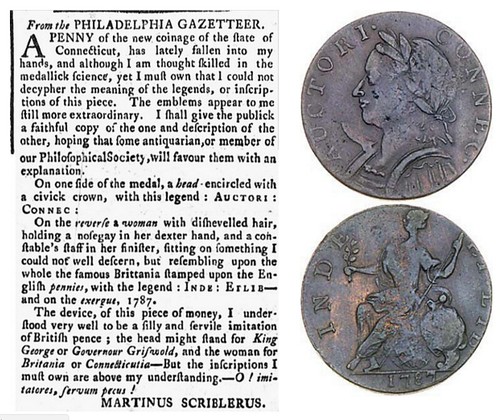
Massachusetts Centinel (Boston, Massachusetts)
Wednesday, August 1, 1787
Courtesy: Genealogybank.com
From the PHILADELPHIA GAZETTEER,
A PENNY of the new coinage of the state of
Connecticut, has lately fallen into my
hands, and although I am thought skilled in the
medallick science, yet I must own that I could not
decypher the meaning of the legends, or inscrip-
tions of this piece. The emblems appear to me
still more extraordinary. I shall give the publick
a faithful copy of the one and a description of the
other, hoping that some antiquarian, or member of
our Philosophical Society, will favour them with an
explanation.
On one side of the medal, a head encircled with
a civick crown, with this legend : AUCTORI :
CONNEC :
On the reverse a woman with dishevelled hair,
holding a nosegay in her dexter hand, and a con-
stable's staff in her sinister, sitting on something I
could not well descern, but resembling upon the
whole the famous Brittania stamped upon the En-
glish pennies, with the legend : INDE : ETLIB -
and on the exergue, 1787.
The device, of this piece of money, I under-
stood very well to be a silly and servile imitation
of British pence ; the head might stand for King
George or Governour Griswold, and the woman for
Britania or Connecticutia - But the inscriptions I
must own are above my understanding. - O! Imi-
tatores, servum pecus!
MARTINUS SCRIBLERUS
Julia adds:
I attempted to translate the latin phrase at the closing: O! imitatores, servum pecus! I found it listed in The World Dictionary of Foreign Expressions (Adeleye, Acquah-Dadzie 1999) as attributed to Horace and meaning “Those who imitate are a herd of slaves”.
I assumed “Martinus Scriblerus” to be a pseudonym but I had never heard the name before. I found this website which gives a nice synopsis of the history behind the name.
Martin Scribler Media commemorates the work and spirit of the Scriblerus Club, formed in 1713 by Jonathan Swift, Alexander Pope, John Gay, John Arbuthnot, and Thomas Parnell.
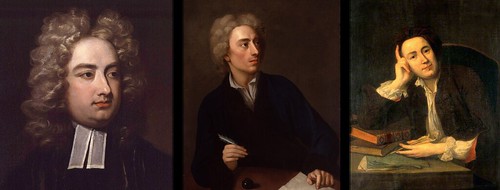
Swift, Pope, and Arbuthnott
The club met only sporadically, and its membership varied over the years. It took its name from its fictional founder, a hack writer named Martinus Scriblerus. Its focus was the writing of a biography of Scriblerus himself, a vehicle to satirize false erudition, ignorance, literary genres, and contemporary life (basically, anything that bugged them at the moment).
As with all writing (and committee work in general), the biography took time; so much time that it was never completed. A single volume, titled The Memoirs of Martinus Scriblerus, was finally published in 1741. It contained tales of errant scholarship and dubious opinion, and an outline of future chapters that were never written. The memoir was penned years before its publication and foreshadowed, among other things, J onathan Swift's Gulliver's Travels (1726). Swift is said to have modelled Gulliver on his fellow Scriblerian John Arbuthnot.
In 1728 Alexander Pope published a satiric mock-heroic poem entitled The Dunciad, in which he anonymously savaged certain writers as dunces. Later, feuding with these writers and their defenders, Pope employed Martinus Scriblerus pseudonymously to undermine them by summarizing, deadpan, their various contradictions and faults. Thus the hack whom Pope had ridiculed morphed into his own hatchet man.
The Scriblerus Club survived until the deaths of Pope and Swift in 1744 and 1745 respectively. Yet Martin Scribler survived the club's demise and found new breath in poet Richard Owen Cambridge's mock epic poem Scribleriad, published in 1751. (The poem is full of literary in-jokes which are obscure today.) Over the years, variations on Scribler's name have been employed as pseudonyms by various literary figures including Henry Fielding, George Crabbe, and (it is rumoured) a famed reclusive present-day postmodernist.

To read the complete article, see:
About Martin Scribler Media (http://martinscribler.com/about/)
Many thanks to Julia for sharing this great little article with a connection to literary giants of the day. Who knew? Not me!
I couldn't resist trying a search in the Newman Numismatic Portal and came up with one match. In an 1845 catalog of the library of Henry A. Brady (which includes several lots of coins) is listed a copy of the rare 1741 Pope and Arbuthnot book, Works and Discoveries of Martinus Scriblerus. -Editor
To read the complete catalog, see:
Martinus Scriblerus
(https://nnp.wustl.edu/library/searchwithterms?searchterm=Martinus%20Scriblerus%20)
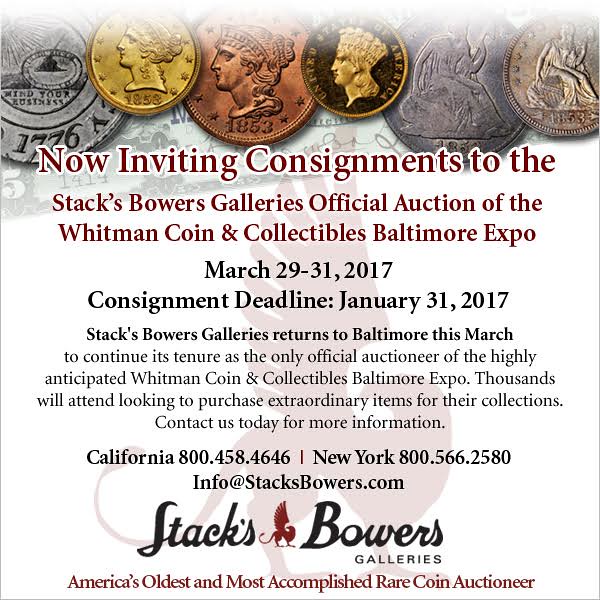
NOTES FROM E-SYLUM READERS: JANUARY 29, 2017
More Fantastic 1804 Dollar Bound Page Proofs
Bill Burd of Chicago, IL writes:
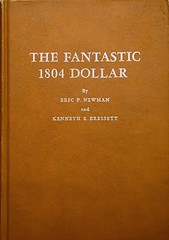 I have an original “proof” copy of this book. It is not autographed and is in excellent condition. I purchased the book out of the Kolbe & Fanning sale #126 of October 4, 2012, Lot 919, and
paid $300.00 plus the juice.
I have an original “proof” copy of this book. It is not autographed and is in excellent condition. I purchased the book out of the Kolbe & Fanning sale #126 of October 4, 2012, Lot 919, and
paid $300.00 plus the juice.
Zeke Wischer writes:
I have one copy, unsigned. I acquired it from Kolbe's Baltimore Book Auction, Sale 137, in November 2014. It currently resides in my private library in Dallas, TX.
To read the earlier E-Sylum article, see:
FANTASTIC 1804 DOLLAR BOUND PAGE PROOFS CENSUS (www.coinbooks.org/v20/esylum_v20n04a12.html)
We Three Blockheads
Jeff Rock of San Diego writes:
Wonderful issue as always -- over the holidays I was finally able to catch up on back issues and now have the joy of reading NEW news instead of month-old news!
I enjoyed 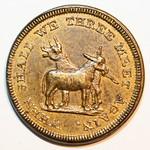 David Schenkman's tokens, but the joke is a far older one than the 1890's -- at least a century older as you can see from the attached picture of a "Conder" token, though
here the viewer is only a blockhead not an ass. Though there was a Conder token that depicted "asses chasing halfpence" -- but in that instance the collector truly earned his asshood (to
coin a phrase) since he paid a premium for a token that insulted him!
David Schenkman's tokens, but the joke is a far older one than the 1890's -- at least a century older as you can see from the attached picture of a "Conder" token, though
here the viewer is only a blockhead not an ass. Though there was a Conder token that depicted "asses chasing halfpence" -- but in that instance the collector truly earned his asshood (to
coin a phrase) since he paid a premium for a token that insulted him!
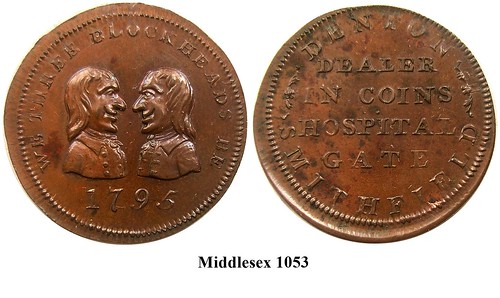
To read the earlier E-Sylum article, see:
WAYNE'S NUMISMATIC DIARY: JANUARY 22, 2017 : We Three Asses (www.coinbooks.org/v20/esylum_v20n04a27.html)
More on the 1963 Kennedy Noble Servant Medal
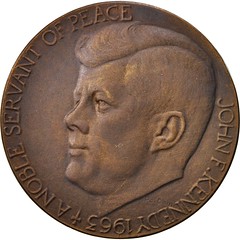
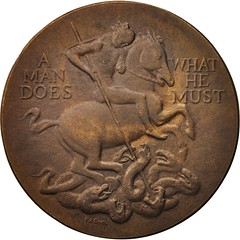
Regarding the Kennedy medal mentioned last week, Henk Groenendijk of The Netherlands writes:
I can give the following information about the artist, Pol Dom, and the Kennedy Medal:
Paul (Pol) Louis Carel Dom (Antwerp 1885 – The Hague 1978) is a Belgian born Artist, who became a naturalized Dutchman in 1936. He was educated at the “Academie voor Schone Kunsten” in Antwerp. Pol Dom was a renowned illustrator, painter and sculptor who also worked as a medalist for the firm of Begeer in Voorschoten (Netherlands). He designed a great many medals.
The John F. Kennedy medal was issued by Begeer. The initiative to issue the medal was taken after his assassination, the medals were available from 19 December 1963. The medal is listed as number 2886-2893 (each size is assigned a different number) in: Koninklijke Begeer, Penningen geslagen of gegoten in de jaren 1960-1975 Deel VI by A.C. von Weiler.
The medal was issued with the following diameters: 18, 22, 25, 30, 38, 40 and 50 mm. The medal with a diameter of 70 mm is cast. The medals were made in bronze, silver and gold. The net proceeds of the sale were given to the Dutch Young Volunteers, organized after the example of the US Peace Corps, which was an initiative of President Kennedy. The total proceeds were more than NLG 50.000 (about US$ 14,000).
To read the earlier E-Sylum article, see:
NUMISMATIC NUGGETS: JANUARY 22, 2017 : 1963 Kennedy Noble Servant Medal (www.coinbooks.org/v20/esylum_v20n04a21.html)
Gold Lady Libertys
Larry Gaye writes:
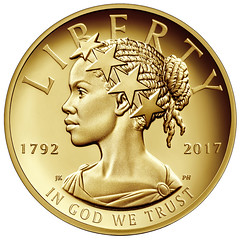 What a great issue, jam packed with some excellent contributions. I was very happy to see the gold Lady Liberty image; a thing of beauty. Images of President Obama's medals was also
much appreciated.
What a great issue, jam packed with some excellent contributions. I was very happy to see the gold Lady Liberty image; a thing of beauty. Images of President Obama's medals was also
much appreciated.
I find it a bit ironic that the grand entrance of the Liberty medal is juxtaposed with the exit of President Obama. The images certainly captured the toll the office takes on every president.
While the gold Lady Liberty piece outweighs my pocketbook, I will certainly opt for the silver issue.
I recently won a club drawing for a 1988 uncirculated Olympic gold and silver set. I'm not a gold bug; that being said, I have always lusted for one of the Liberty five dollar gold pieces. She has a look all of her own as a timeless illustration of the concept of Liberty
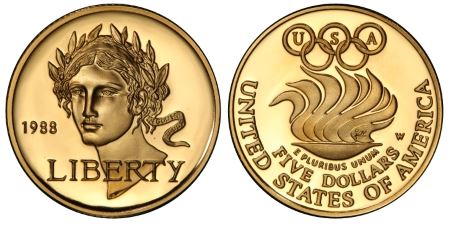
1988 Olympic $5 Gold coin (PCGS CoinFacts)
To read the complete PCGS CoinFacts article, see:
1988-W $5 Olympic, DC (Proof) (www.pcgscoinfacts.com/Coin/Detail/9631)
To read the earlier E-Sylum article, see:
2017 AMERICAN LIBERTY GOLD COIN UNVEILED (www.coinbooks.org/v20/esylum_v20n04a19.html)
Aethelred Hairstyle Match?
Ron Haller-Williams writes from Brazil:
Just noticed this on eBay, a close(ish) match for the original quiz question.
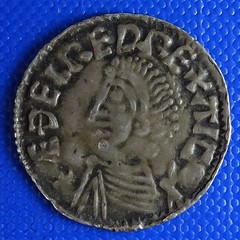

To read the complete lot description, see:
Aethelred ii - Long Cross type Penny/Penning - Scandinavian - ex-Spink (http://www.ebay.com/itm/182423773482)
To read the earlier E-Sylum articles, see:
EXHIBITION: MINTED - MAKING MONEY AND MEANING (www.coinbooks.org/esylum_v19n52a28.html)
MORE ON ANCIENT COIN HAIRSTYLES (www.coinbooks.org/v20/esylum_v20n01a36.html)

ON THE SPEED OF ELECTRONIC PUBLISHING
David Schwager writes:
Thank you for mentioning my CoinWeek article, Why Do We Want this Stuff?: 8 Views on the Psychology of Collecting. Not counting your email newsletter and my own email newsletter Sample Slab Update, this was my first work for the Web. What stood out most was the speed of publishing. I sent CoinWeek two articles on Saturday 1/14. They ran the first on Tuesday 1/17 and the second on Monday 1/23. It took only a few days to edit, add photos, and design the articles with attractive custom graphics, all without the need for my input. In contrast, monthly magazines sometimes take more than a year to run my submissions.
One of my reasons for starting The E-Sylum was my hatred of the sheer drudgery of page layout. I can do it, but it's just not my cup of tea - I don't have that much patience or time. Online I can work fast, often getting new contributions Sunday afternoon and publishing them that evening.
In addition to layout, many print periodicals have other chores which often include fleshing out references, obtaining images, getting permissions and fact-checking, all of which are well worth waiting and paying for. Books have even higher standards and longer timeframes, but again are worth the wait and cost.
We're the McDonald's of numismatic publishing - plentiful, fast and cheap. Our print brethren are the sit-down restaurants with china and tablecloths. Paid publications and their able staffs play a key role, and all of us must continue supporting them with our dollars and contributions.
The lines are blurring though, as more publications have an online component. When we went to HTML and could include pictures and nicer fonts we acquired the LOOK of a professional journal, and people sometimes mistake The E-Sylum for a refereed journal, which it never was. Rather, it's a conversation among writers and readers, with an editor to keep things orderly and civil. Keep those virtual cards and letters coming, folks. -Editor
To read the earlier E-Sylum article, see:
THE PSYCHOLOGY OF COLLECTING (www.coinbooks.org/v20/esylum_v20n04a16.html)
For more information on Sample Slab Update, see:
www.SampleSlabBook.com
ON VANISHING NUMISMATIC WEBSITES
Kavan Ratnatunga of Sri Lanka writes:
I was updating my website and was sad to find that many of the numismatic websites that were very active 10-15 years ago are no longer online. Some may have moved to different locations, but in many the domain hosting has expired, domains purchased by other parties exploiting pre-existing links and used for marketing.
Some are archived at http://web.archive.org/ and some other sites like archive.is. However, we can't expect these archive sites to last for ever and some stop archiving and what is preserved is an old copy.
We buy and keep books safe in libraries, but some websites are allowed to fade away without a trace but a lot of broken links. How many of The E-Sylum Featured Web Sites still remain online 10-15 years later?
Isn't it time that the numismatic community set up a procedure to archive the Numismatic websites to ensure they don't get lost?
One of the reasons for publishing in The E-Sylum extensive excerpts of articles and information found on web sites is just this fact: in time, the web sites change, move or disappear completely, leaving behind dead links. At least some of that numismatic content has been saved, albeit in a different electronic-only form.
The Newman Numismatic Portal team is aware of this problem, and is considering solutions to mitigate it. We hope someday to archive at least some of the more important numismatic web sites, particularly the smaller noncommercial ones that without steady funding tend to come and go on the whims and personal situation of their owners. When people die, their web sites usually go with them. That's why The E-Sylum isn't just a personal blog, but is affiliated with a society that will outlive its current Editor and helpers, and is already archived on the NBS web site and partially backed up on the Newman Portal.
As a longer-term project started earlier this year, I've been compiling and organizing a list of active numismatic web sites culled from The E-Sylum's Featured Web Site section, major club and dealer sites and elsewhere on the web. It was no surprise to find that many, many of these links are broken with no forwarding address left behind.
If you can recommend particularly useful favorite numismatic web sites, or would like to assist us by compiling lists of such sites, please contact me at whomren@gmail.com . Thanks. -Editor
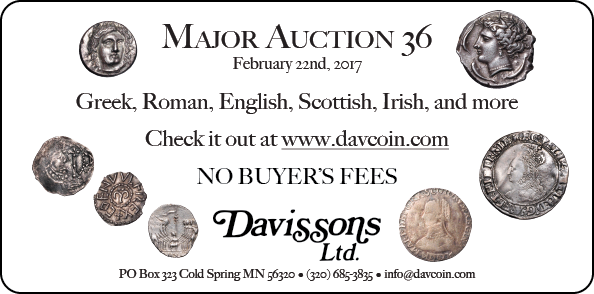
MORE ON JERNEGAN'S LOTTERY MEDAL
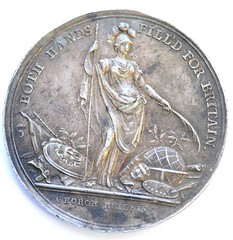
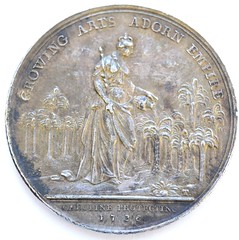
Silver Medal 'Jernegan's Lottery 1736' by J Tanner; obv. 'BOTH HANDS FILL'D FOR BRITAIN' around helmeted figure of Minerva standing between military trophies & emblems of the Arts & Sciences, 'GEORGE REIGNING' in ex., rev. 'GROWING ARTS ADORN EMPIRE' above crowned standing figure of Queen Caroline watering a grove of palm trees, 'CAROLINE PROTECTING 1736' in ex.
Jim Duncan of New Zealand writes:
He was a silversmith in London. He built a massive silver wine cooler - probably big enough to hold an adult, and offered it as a lottery prize. If you bought a ticket you got a medal as well. The original is now in Russia, but the Victoria & Albert Museum in London has a replica. I have seen it, but don't have a photo to share.
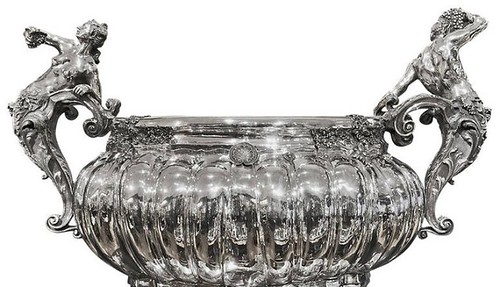
FOR SALE: A monumental European sterling silver, massive wine cistern, after the original made by C F Kandler, London 1735. The original was commissioned by Henry Jerningham, a London goldsmith-banker, who wanted to create the largest ever piece of entertainment silver.
He employed the sculptor John Michael Rysbrack to model the Bacchanalian scenes on the bowl, the crouching panthers beneath and the satyr handles. It took the silversmith Charles Frederick Kandler four years to make. When it was finished in 1735, it weighed 8,000 ozs. In 1737 Jernegan offered the cooler as a lottery prize to raise funds for a new bridge over the Thames at Westminster. Silver medals were sold as lottery tickets for about five or six shillings each.
The winner, Major William Battine, appears to have sold the cooler to the Regent Anna Leopoldovna of Russia in 1738. Since 1743 it has been in the Hermitage, St Petersburg. In 1857 the Victoria and Albert Museum made an agreement with Elkington & Co., the Birmingham manufacturers. Exploiting their new technique of electroplating, historic silver was reproduced 'increasing the copies of fine specimens' that not only the consumer may become familiar with the beauties, but both artist and artisan may also be able to compare the same with their own productions.'
The scheme was so successful that it was extended to other European collections, including those in Imperial Russia. The Jerningham wine cooler was one of about 200 examples of English silver in Russia to be electrotyped. There are 3 electrotype copies known to exist. One is in the Victoria & Albert Museum in London. The second is in the Metropolitan Museum in New York, and the third is in the Queen's Regimental Silver in England.
To read the earlier E-Sylum article, see:
NUMISMATIC NUGGETS: JANUARY 22, 2017 : 1736 Jernegan's Lottery Medal (www.coinbooks.org/v20/esylum_v20n04a21.html)
QUERY: DATING HEEREN BROTHERS BADGES
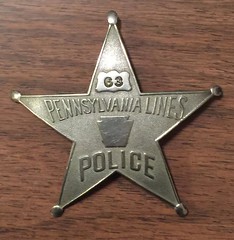
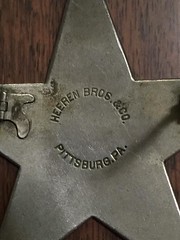
Gary writes:
I am seeking information about the history of this Pennsylvania Lines railroad police badge. I am hoping someone can come up with an approximate age based on the spelling of 'Pittburg' and the 'Heeren Bros. & Co.' hallmark. Thank you for any help you can provide!
For more on Pittsburgh's H,, see:
How Pittsburgh Got Its "H" Back (and 7 Other Geographic Naming
Oddities) (http://mentalfloss.com/article/52943/how-pittsburgh-got-its-h-back-and-7-other-geographic-naming-oddities)
What's in an H? (http://popularpittsburgh.com/whatsinanh/)
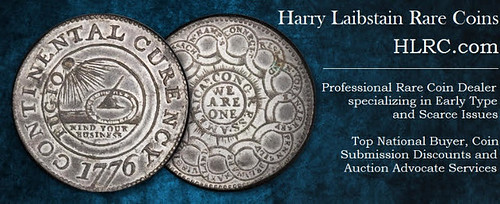
VOCABULARY TERM: MAP SHAPE
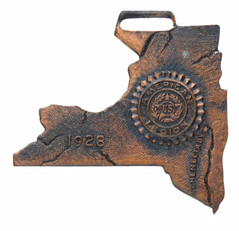

Map shapes appear in both solid medals and shell medals. These are both solid medals as part of a badge. The New York medal is for the delegate from that state to a national conference of a fraternal order, the American Legion. The makers mark is on the reverse of the Illinois medal.
Map Shape. Silhouetted medallic items in the shape of some geographic entity, as country, state, province or region. All the states of America have appeared as map
shapes, as well as many provinces of Canada and countries of Europe. Those of most unusual shape (as Italy's boot shape) are quite popular. See UNUSUAL SHAPE, SILHOUETTE.
CLASS 02.13
DEMETRIUS T. EATON (1855-1920)
Demetrius T. Eaton (1855-1920), was born the eldest of eight children on January 22, 1855, in Marion County, Indiana, son of James Anderson Eaton (1833-1921) and Mary Ellen Davis Eaton (1836-1924). The Eaton family descended from the time of the American Revolution and their genealogy is published in Daughters of the American Revolution Magazine, Vol. 89 (1955) : 296.
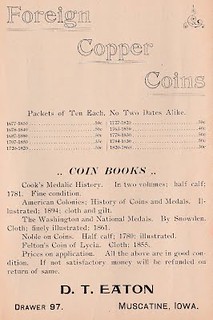 Demetrius T. Eaton is of special interest to American numismatic historians and to the Numismatic Bibliomania Society since he was a stamp, coin and numismatic literature dealer active from
the last decade of the nineteenth century to 1920. Although he specialized in philatelics, i.e., stamp collecting and dealing he also collected, bought and sold the more traditional numismatic
material of coins and coin literature, though both stamps and coins and their respective literature are always to be correctly understood as part and parcel of the entire class of the field of
numismatics.
Demetrius T. Eaton is of special interest to American numismatic historians and to the Numismatic Bibliomania Society since he was a stamp, coin and numismatic literature dealer active from
the last decade of the nineteenth century to 1920. Although he specialized in philatelics, i.e., stamp collecting and dealing he also collected, bought and sold the more traditional numismatic
material of coins and coin literature, though both stamps and coins and their respective literature are always to be correctly understood as part and parcel of the entire class of the field of
numismatics.
According to the 1880 U. S. Census he was living with his parents working as a clerk in a dry goods store. On April 26, 1882, he married Jeannetta "Nettie" Smyth (1860-1950), of Pennsylvania, and they had a son Earl Arlo Eaton (1887-1968). In July 1895 he joined the American Philatelic Association and was APA Member No. 1039. He began advertising in The Philatelic West in Volume 7, No. 1, June-July, 1898, first exclusively as a stamp dealer.
When Eaton first emerges as a stamp and coin dealer in November 1898 he not only offers foreign copper coins but also numismatic literature for sale. His interests were in ancient Roman and foreign copper coins. Not atypical in 19th and early 20th century coin and stamp periodicals we find the list of books with several typographical errors.
Among the coin books are : Cook's Medallic History of Imperial Rome (1781); Charles Wyllys Betts, American Colonial History Illustrated by Contemporary Medals (1894); James Ross Snowden, A Description of the Medals; of Washington of National and Miscellaneous Medals; and of Other Objects of Interest in the Museum of the Mint (1861); Noble's Dissertations upon the Mint and Coins of the Episcopal Palatines of Durham, 1780; Sir Charles Fellows, Coins of Ancient Lycia Before the Reign of Alexander. With an Essay on the Relative Dates of the Lycian Monuments in the British Museum. (1855).
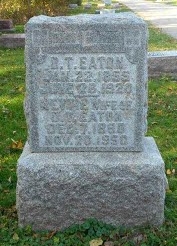 According to the 1900 and 1910 U. S. Census he lived on 618 East 10th Street, Muscatine, Iowa, and listed as a stamp dealer. He began corresponding with the Chapman Brothers by June
1901.
According to the 1900 and 1910 U. S. Census he lived on 618 East 10th Street, Muscatine, Iowa, and listed as a stamp dealer. He began corresponding with the Chapman Brothers by June
1901.
He died June 26, 1920.
To read the complete article, see:
EATON, DEMETRIUS T (https://sites.google.com/a/numismaticmall.com/
www/numismaticmall-com/eaton-demetrius-t)

ARTICLE PROFILES W. DAVID PERKINS
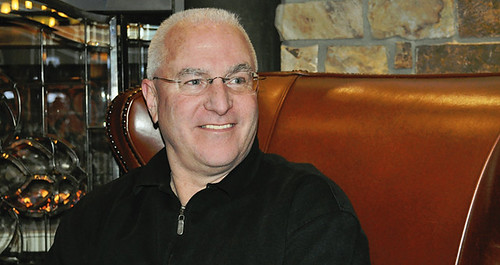
Early in his more than two decades at IBM, weekends afforded W. David Perkins — owner of W. David Perkins Numismatics in Centennial, Col. — the opportunity to visit New York City to view auction lots and attend sales.
In 2014, Dave switched careers from technology to becoming a full-time professional numismatist.
Coin World: What triggered your interest in numismatics and how old were you at the time? What did you start collecting first?
W. David Perkins: When I was 9 or 10 years old, my grandfather got me interested in coin collecting and numismatics. Like most young kids in the 1960s I collected Lincoln cents by date and Mint mark using the blue Whitman folders. I also collected dimes, quarters, and half dollars. The higher denomination silver coins often got spent, and thus I, like many, found these collections hard to complete. When in California during the summers I would get a $50 bag of cents maybe three times a week, and pull out the S Mint-marked cents along with other rare and scarce coins.
CW: We know you have an affinity for early United States silver dollars and half dollars. What drew you to these issues?
WDP: I got back into coin collecting in the early 1980s after purchasing a copy of Coin World to check on current prices of coins I'd pulled from circulation over the previous 12 years, or so. This awakened the collecting bug in me. I began learning about and buying coins that I'd never seen or handled “in person” and couldn't find or afford as a child, like Draped Bust silver dollars, Liberty Seated and Trade dollars, and Seated and Capped Bust half dollars. I liked the way these large coins looked and felt when holding them — heavy and old! Over time I focused more and more on the early U.S. silver and copper coins, these coins having been made from individually punched dies, and with all the inherent problems that the first U. S. Mint had during the early years — die varieties, overdates, die cracks and shattered dies, errors, etc.
CW: We know you love numismatic research and love to trace die progressions and coin pedigrees.
WDP: I do love studying and collecting die progressions on early U.S. coinage. I especially love late die states and cuds. A large portion of my numismatic research falls under the heading, “Famous Collectors and Collections.” I love the “thrill of the hunt.” In the 1980s, I began trying to contact current and former collectors of the early dollars 1794–1803, hoping they or a relative might have old letters and correspondence with other collectors and dealers, invoices from purchases, notes, annotated silver dollar reference books, photos, listings of old collections, etc. I've had great luck and success with this approach over the years.
To read the complete article, see:
Picking the brain of professional numismatist W. David Perkins
(www.coinworld.com/news/us-coins/2017/01/editors-q-and-a-paul-gilkes-picks-brain-of-w-david-perkins.all.html)
THE BOOK BAZARRE
BUILDING THE LILLY COLLECTION, CONTINUED
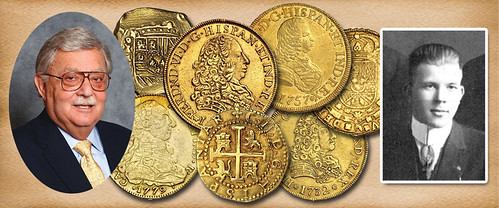
Visiting with Mr. Lilly at Eagle's Nest and seeing his collections confirmed to me how a dedicated collector approaches his hobbies. Mr. Lilly's approach was simple: assemble the best you can, set your goals, get the knowledge you need and take advantage of the experience and expertise of others. The result is then a fine, well-built collection that can someday be passed on to family members, an institution of learning, or be sold at auction by a reputable auction house, perhaps a firm that assisted in building the collections. To me, Mr. Josiah K. Lilly was a man with a purpose, who made himself remembered in numismatics, philately, and the collecting of rare book and documents, early colonial rifles, great pieces of art and statuary, and left a legacy for the future to study and enjoy. With Mr. Eliasberg we negotiated to acquire an almost complete collection of United States gold, silver and copper, along with a wonderful group of foreign gold coins. The combination of what Mr. Eliasberg already owned and the Clapp Collection resulted in a very important collection and the Stack family was pleased to be a supplier of new and upgrade coins as well as helping to set aside the duplicates for future trading and possible sale. Louis E. Eliasberg was collecting at the right time and he was able to get a great start on his unparalleled cabinet.
Mr. Lilly commented about this: "I guess this does not happen often. It was fortunate for me that I was able to purchase the U.S. gold coin collections you found for me in 1954 and 1955.” We once again marveled at how far he was able to get with his collecting because of these advantageous acquisitions from the Anderson Dupont, Weihman and Schermerhorn collections. “I guess I was in the right place at the right time,” he said.
He then noted that he still needed two U.S gold coins to complete the collection. One was the unique 1870-S $3 gold piece (which Louis Eliasberg owned). Mr. Lilly noted: “I guess I have to wait till he either sells his collection or until he passes on. Since we are close the same age, I will try to wait." All this was said with a warm smile on Mr. Lilly's face.
He continued: “But I do have a chance on getting the 1822 half eagle. You told me there are only three examples: the one in the Smithsonian, the Eliasberg specimen, and the one in the Carter Family Collection, which is vast, but not as complete as the one you built for me!"
Mr. Lilly mentioned that members of the Stack family had approached Amon, Jr., over the past four years but he hadn't wanted to sell it. He asked us to keep trying, as he was excited to be just one coin away from a complete collection of U.S. gold.
As mentioned earlier, Amon Carter would often come by the shop whenever he was in New York. On those visits or when we would encounter him at a show, he always greeted us, smoking his favorite cigar. Often he would start the conversation with, "Hi Guys, how are you doing? Don't ask, I know you want to buy my 1822 half eagle.” He promised that when he was ready to sell he would give us first refusal, remembering all the things the Stack family had done for him over the years.
The Lilly Collection of Gold Coins of the World included 4,500 or more examples. This was a gigantic feat for any collection, and it was still growing.
But in every discussion we had, Mr. Lilly wanted to talk about completing his United States gold collection. He always said he would be patient; but his competitive collector drive to build a collection of coins nearly as complete as the Eliasberg Collection was always there. While he might not be able to acquire every U.S. gold coins, he knew that the 1822 half eagle was a possibility. He knew that three of them were known and that Stack's had a promise from Amon Carter, Jr. that we would have first refusal when he decided to sell it.
One day in the early summer 1960, Amon Carter, Jr. came into our shop and said to Ben (the first Stack to greet him that day), "Are you guys still interested in buying my 1822 half eagle?” Ben responded firmly: "Amon, you know we are!”
"Well, here it is!” He said as he reached into his lower vest pocket, took out the coin, and placed it on our counter. By this time the entire Stack family was in front of the shop. We each looked at it, examined it with a glass, and carefully returned it to the pad on the counter in front of us.
Of course we asked immediately: "Amon, how much do you want for it?" Amon, chewing on his cigar, said, " I promised you that when I decide to sell it, I would offer it to you, for your client, first.” He explained that he and his wife were doing some big renovations on their home in Dallas and his wife wanted to re-do the driveway, which was quite long and wide. He finished, “I need $50,000 for the coin. "
We all gasped! That was by far the highest price for a gold coin. We responded that the price was quite dear. But our client had wanted it since we sold him the Weihman collection of half eagles in 1955, hating the “hole” in his collection. Amon replied: "Then call him and ask him if he is willing to pay that for the coin!"
So we called Mr. Lilly, told him of the events of the day and informed him of the asking price for the coin. There was short silence on the phone, and he then confirmed that there were only three known, one in the Smithsonian and the other in “that noted Baltimore collection we have spoke about many times.” He asked us if we were really looking at it. We answered that it was right on the desk in front of us. A moment passed and then we heard him say, “I will take it! I will send a check today!" He then concluded the call thanking us and thanking Mr. Carter.
We confirmed the purchase and Amon thanked us for concluding the deal so smoothly. He got up, lit another cigar and left with his famous departing words, "Adios, mi amigos. We will do more together in the future.” He was a gentleman who kept his word. Years later, while driving from Fort Worth to the Dallas airport he had a heart attack and passed away. Within a month Stack's had a call from his family and Amon's executors, to come down to Dallas, pick up the balance of the Amon Carter Family Collection and offer it for sale at public auction. Amon had left instructions that if anything happened to him, his coin collection should be auctioned by Stack's. And that is just what happened.
To read the complete articles, see:
Building a World Class Numismatic Gold Coin Collection: The Josiah K. Lilly Collection Part 16
(www.stacksbowers.com/News/Pages/Blogs.aspx?ArticleID=2362)
Building a World Class Numismatic Gold Coin Collection: The Josiah K. Lilly Collection Part 17
(www.stacksbowers.com/News/Pages/Blogs.aspx?ArticleID=2373)
Building a World Class Numismatic Gold Coin Collection: The Josiah K. Lilly Collection Part 18
(www.stacksbowers.com/News/Pages/Blogs.aspx?ArticleID=2386)
Building a World Class Numismatic Gold Coin Collection: The Josiah K. Lilly Collection Part 19
(www.stacksbowers.com/News/Pages/Blogs.aspx?ArticleID=2401)
To read the earlier E-Sylum articles, see:
BUILDING THE LILLY COLLECTION, CONTINUED (http://www.coinbooks.org/esylum_v19n49a18.html)
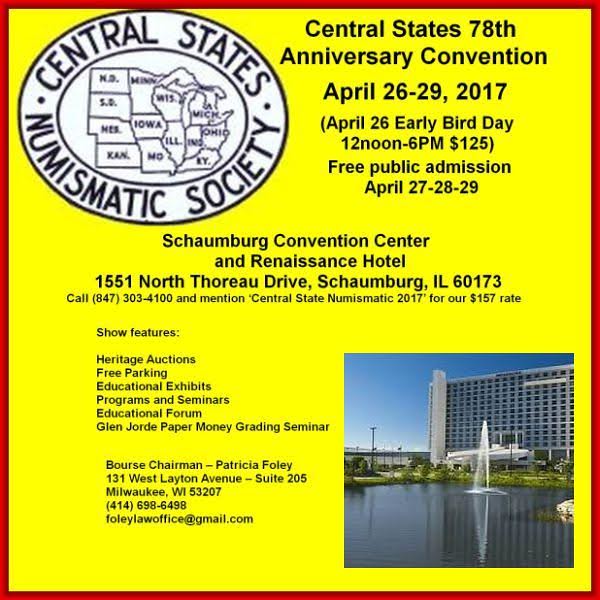
CNG'S TRITON XX SALE PRICES REALIZED
CNG's Triton XX Realizes Over $11 Million on the Hammer
Classical Numismatic Group of Lancaster, Pennsylvania and London, England held their annual Triton auction in conjunction with the 45 th Annual New York International Numismatic Convention (NYINC) on January 10-11, 2017. The pre-sale estimate total for Triton XX was $8,575,200 million, and the total of actual prices realized was $11,292,580 on the hammer (buyer's fees not included, which were either 19 or 21%, depending on the method of bidding) with 97.8% of all lots sold.
Triton XX featured 1696 lots of ancient Greek, Celtic, Oriental Greek, Central Asian, Roman Provincial, Roman Republican, and Roman Imperial coinage. Additionally, there were featured selections of Byzantine, Early Medieval, Islamic, World, and British Coinage, as well as World Medals and a nice selection of large lots.
Just a few of the individual highlights from Triton XX are:

Lot 483 – EGYPT, Alexandria. Julia Mamaea. Augusta, AD 222-235. Æ Drachm (34mm, 28.84 g, 12h). Dated RY 10 of Severus Alexander (AD 230/1). IOY MAMAIA CЄB MHT CЄB K CTPA, draped bust right, wearing stephane / Nilus, raising his right hand and cradling a cornucopia with his left, standing left in a biga of hippopotami; the hippopotamus in the background is raising its head, looking back at Nilus; palm frond in the exergue. Apparently unpublished. Near EF, tan-brown patina with touches of red, pierced in antiquity. Extremely rare.
Estimated at $3500; Realized $9500 on the hammer.
Published in Blanchet, Bahrfeldt, Babelon, and Biaggi
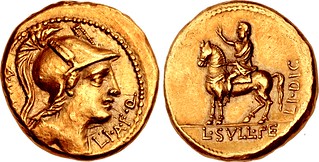
Lot 519 – A. Manlius A.f. 80 BC. AV Aureus (20mm, 10.75 g, 8h). Uncertain Eastern mint. Draped bust of Roma right, wearing crested helmet ornamented with two plumes, and earrings; A • MAN downward to left, LI • A • F • Q upward to right / Sulla, laureate and wearing sagum, left on horseback, raising right hand in acclamation; L • SVLL • FE in exergue, LI • DIC • upward to right. Crawford 381/1a (same rev. die); Sydenham 762 = BMCRR East 16; Calicó 20 (this coin illustrated); Biaggi 13 = Bahrfeldt 12/4 = A. Blanchet, Les monnaies romaines (Paris: 1896), p. 121, 9 = Babelon II 9 (this coin); Kestner –; RBW –. Near EF, warm reddish toning. Extremely rare, and the only issue naming Sulla as dictator.
Estimated at $200,000; Realized $475,000 on the hammer.
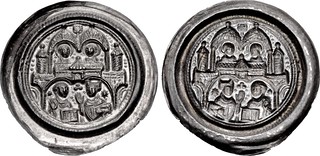
Lot 1219 – GERMANY, Quedlinburg (Abtei). Beatrix II von Winzeburg. 1138-1160. AR Bracteate Pfennig (28.5mm, 0.85 g). Abbey with two towers and two domes, two nuns on second floor; below, confronted busts of Beatrix, holding gospel, and bishop, holding gospel and raising hand in benediction; cross above, pellets around / Incuse of obverse. Theodor Stenzel, Der Baktreatenfund von Freckleben im Herzogthum Anhalt (Berlin, 1862), 63 = J.J. Leitzmann, “Die älteren Münzen der Abtei Quedlinburg mit Bezugnahme auf deren Beschreibung durch H. Ph. Cappe, Dresdehn 1851,” in Zeitschrift des Harz-Vereins für Geschichte und Alterthumskunde 5 (1872), 30 = H. Dannenberg, “Mittelalterliche Denkmünzen,” in ZfN 21 (1898), p. 115 = Mehl 74 (this coin cited and illustrated); Kestner –; Löbbecke –; Bonhoff –. EF, toned. Extremely rare – one of two known and the only example in private hands (the other in Berlin).
Estimated at $5,000; Realized $12,000 on the hammer.
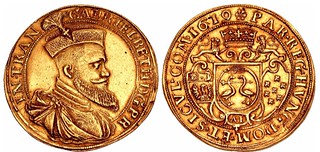
Lot 1400 – TRANSYLVANIA, Principality. Gábor Bethlen. 1613-1629. AV 10 Dukát (44mm, 34.30 g, 12h). Gyulafehérvár (Karslburg / Alba Iulia) mint. Dated 1618 AI. GABRIEL · BETH · D : G · PR IN · TRAN, armored and draped bust right, wearing short fur cap with feather / * PAR · REG · HVNG · DOM · ET · SICVL · COM · 1619 (trefoil stops), three coats-of- arms; above, crown with leonine supporters; AI below. Resch 25; MBR 1233; KM 117; Friedberg 347. Near EF. Extremely rare.
Estimated at $50,000; Realized $85,000 on the hammer.
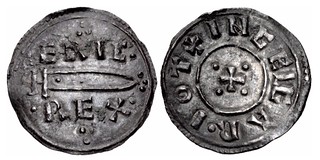
Lot 1519 – ANGLO-SAXON, Anglo-Viking (Hiberno-Norse Northumbria). Eric Bloodaxe. Second reign, 952-954. AR Penny (20.5mm, 1.35 g, 10h). Sword type. York mint; Ingelgar, moneyer. ·ERIC·/·REX· in two lines; between, sword right and triple- pellets; triple-pellets above and below / + INGELGAR · IOT, cross pattée, pellets in quarters. CTCE Group XI, b-m; SCBI 4 (Copenhagen), 649–51 var. (rev. legend); BMS 1278–9 var. (same); North 550; SCBC 1030. Near EF, toned. A few deposits, slight bend in flan. Extremely rare and the most desirable of all Viking coins.
Estimated at $30,000; Realized $130,000 on the hammer. This is a new world record price for an English silver penny.
CNG is currently accepting consignments for its next mail bid auction, CNG 105, scheduled for May 10, 2017.
For further details and any additional information, please contact CNG, Inc. at:
Classical Numismatic Group, Inc.
P.O. Box 479
Lancaster, PA 17608-0479
Telephone: (717) 390-9194
Fax: (717) 390-9978
Email: cng@cngcoins.com
To read the earlier E-Sylum article, see:
CNG TRITON XX SALE HIGHLIGHTS (www.coinbooks.org/esylum_v19n50a26.html)

DIX NOONAN WEBB MARCH 2017 SALE HIGHLIGHTS
RARE ‘UNA AND THE LION' FIVE POUNDS AMONG DIX NOONAN WEBB HIGHLIGHTS
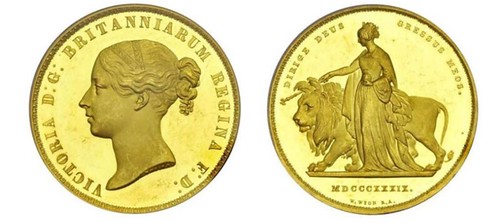
A superb example of the ‘Una and the Lion' Proof Five Pounds is expected to fetch up to £100,000 at Dix Noonan Webb A magnificent example of what is arguably one of the world's most beautiful coins is expected to fetch up to £100,000 at an auction of Coins, Tokens and Historical Medals to be held by the international specialists Dix Noonan Webb in London on 15 March 2017. The gold British ‘Una and the Lion' Proof Five Pounds dating from 1839 will be one of the highlights of the sale, which will also include a gold George V Proof Crown from 1935, estimated at up to £40,000.
Una and the Lion are characters in Edmund Spenser's The Faerie Queene written between 1590 and 1611. The reverse of the coin designed by William Wyon depicts Queen Victoria as Una guiding the British lion. The design is an unusual one which has given the coin its familiar name of the Una and the Lion Five Pound piece. The obverse of the coin has William Wyon's famous Young Head portrait of Queen Victoria. There is no evidence that these coins were ever struck for circulation. All the indications are that they were only intended to be proof coins and were primarily made for inclusion in the specimen sets of the first Victorian coins.
Only a few hundred were struck and a number of different variations can be found among the surviving pieces. There are different types of edge, differing patterns of ornamentation on the queen's hairbands and the reverse can read either DIRIGE DEUS GRESSUS MEOS (May the Lord direct my steps) or DIRIGIT instead of DIRIGE (The Lord directs my steps). The coin to be auctioned at Dix Noonan Webb reads DIRIGE, has a plain edge and, apart from some minor surface marks, is otherwise virtually as struck. The estimate is £80,000 to £100,000.
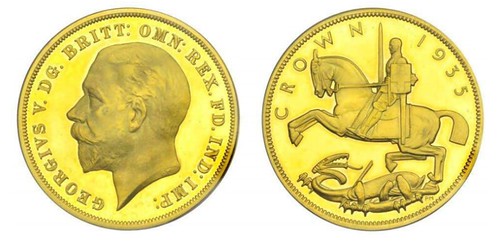
The George V 1935 Proof Crown in gold is expected to sell for up to £40,000 A George V Proof Crown in gold dating from 1935 will also be auctioned by Dix Noonan Webb. Only 30 of these are known to have been struck, five being consigned to museums and the remaining 25 balloted for in accordance with the practice of the time. This example has minimal surface marks and is otherwise virtually as struck. It is estimated at £30,000 to £40,000.
Dix Noonan Webb
16 Bolton Street
London W1J 8BQ
Telephone: 020 7016 1700.
https://www.dnw.co.uk/

ALEXANDER MACOMB GOLD MEDAL REOFFERED
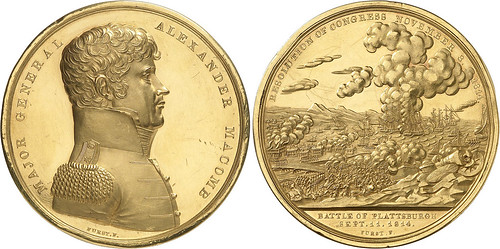
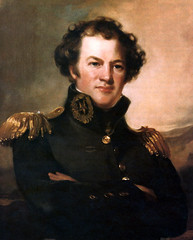 When the Congress of the United States of America wants to bestow a particularly high honor, it awards the Congressional Gold Medal. It does so since 1775, when General George Washington
was decorated this way. Since that time, many distinguished honorees received this medal. The recipients include Neil Armstrong, Winston Churchill, Walt Disney, Thomas Edison, George Gershwin,
Ulysses Grant, Martin Luther King, Charles Lindbergh, John Pershing, Frank Sinatra, Mother Theresa, John Wayne, and the Wright brothers. Among them was Alexander Macomb praised by his contemporaries
as the Hero of Plattsburgh.
When the Congress of the United States of America wants to bestow a particularly high honor, it awards the Congressional Gold Medal. It does so since 1775, when General George Washington
was decorated this way. Since that time, many distinguished honorees received this medal. The recipients include Neil Armstrong, Winston Churchill, Walt Disney, Thomas Edison, George Gershwin,
Ulysses Grant, Martin Luther King, Charles Lindbergh, John Pershing, Frank Sinatra, Mother Theresa, John Wayne, and the Wright brothers. Among them was Alexander Macomb praised by his contemporaries
as the Hero of Plattsburgh.
By resolution of 3 November 1814, he had received the gold medal from President Madison himself. He was one of only 27 men who were decorated this way, in recognition of their achievements in the Second War of Independence.
Manufactured by the die cutter Moritz Fürst, who was a Jew born in Preßburg, the medal's obverse features the portrait of Alexander Macomb clad in his uniform, with his military title, while the reverse depicts the decisive naval battle and fighting land forces in the foreground.
The medal stems from the family possessions of the direct descendants of Macomb. Through marriage, Susan Watts Macomb (1849-1928), direct heir of the hero of Plattsburgh, the medal passed into the possession of the Grand d'Hauteville noble family.
And Alexander Macomb? On 29 May 1828, John Quincy Adams promoted him to the U.S. army's Commanding General. In this capacity, he reformed the army. By increasing listed pay, he fought the frequently occurring desertions. He installed a relief system for widows and orphans of the officers who had died in battle. In addition, he established an officer retirement system to prevent over-ageing. He died on 25 June 1841 – not on the battleground, but sitting in his office – and was honored with a grave at Congressional Cemetery.
The medal offered by Künker is a high-class historical testimony recalling one of the pivotal moments in American history.
To read the complete article, see:
The Hero of the Second War of American Independence
(www.kuenker.de/en/information/presseinformationen/aktuelle-mitteilungen/112)
To read the earlier E-Sylum articles, see:
MACOMB BATTLE OF PLATTSBURGH GOLD MEDAL OFFERED (www.coinbooks.org/esylum_v18n36a21.html) NOTES FROM E-SYLUM READERS: SEPTEMBER 13, 2015 : Macomb Medal Brings $238,000 (www.coinbooks.org/esylum_v18n37a12.html) MACOMB MEDAL JUST ONE HIGHLIGHT OF SALE (www.coinbooks.org/esylum_v18n38a11.html)
THE BOOK BAZARRE
ARCHIVES INTERNATIONAL SALE 38 ANNOUNCED
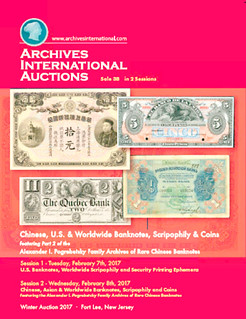 CHINESE, U.S. AND WORLDWIDE BANKNOTES, SCRIPOPHILY, COINS AND SECURITY PRINTING EPHEMERA WILL BE SOLD AT PUBLIC AUCTION IN TWO SESSIONS ON TUESDAY, FEB. 7th AND WEDNESDAY, FEB. 8th BY
ARCHIVES INTERNATIONAL AUCTIONS
CHINESE, U.S. AND WORLDWIDE BANKNOTES, SCRIPOPHILY, COINS AND SECURITY PRINTING EPHEMERA WILL BE SOLD AT PUBLIC AUCTION IN TWO SESSIONS ON TUESDAY, FEB. 7th AND WEDNESDAY, FEB. 8th BY
ARCHIVES INTERNATIONAL AUCTIONS
Over 1,400 lots of rare and highly collectible worldwide banknotes, scripophily (stock and bond certificates), coins and security printing ephemera will be sold at a two-session public auction on
Tuesday, February 7 th and Wednesday, February 8 th in the offices of Archives International Auctions at 1580 Lemoine Avenue (Suite 7) in Fort Lee, New Jersey. Start times both days are 10:30 am
Eastern time. For those unable to attend in person, online bidding will be available through the website www.ArchivesInternational.com.
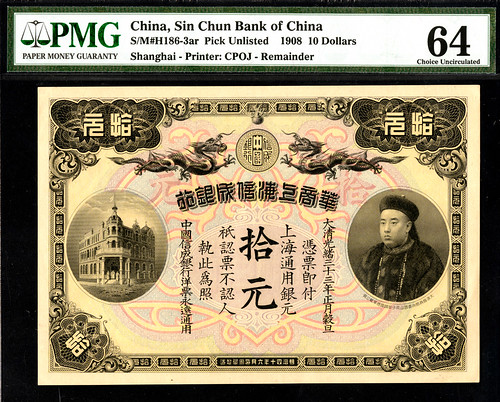
Lot 1262 Sin Chun Bank of China, 1908 Private Banknote Rarity
Featured in the auction is the second part of the Alexander I. Pogrebetsky Family Archives of rare Chinese banknotes that have never been offered previously at public auction. AIA held the first auction from this Family archives in 2015. This portion was held by a different family member unknown to them at the time and includes many rare issues that were not included in the first offering. Included in the Chinese session on day 2 is a group of high grade Sin Chun Bank of China notes that rarely come up for auction from the Pogrebetsky Collection. Other highlights include a new find of Imperial Bank of China 1898 issued notes found in an old estate in Florida; an outstanding collection of Middle Eastern notes including a desirable group of banknotes from Jordan, Iran, Iraq and Qatar & Dubai; and hundreds of rare railroad stocks and bonds as well as an extensive selection of rare scripophily including many topics of interest.
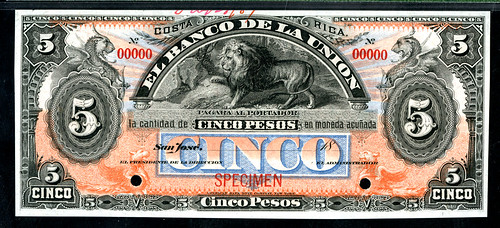
Lot 1424 Banco De La Union, ND (1886-89) Specimen Banknote
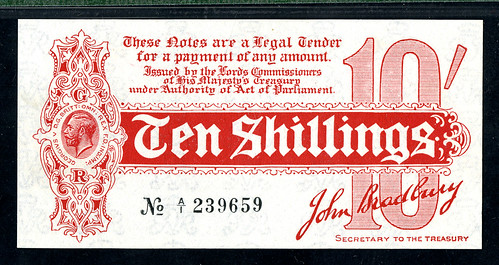
Lot 1486 - 10 Shilling Treasury Note, ND (1914), Uncirculated King George V
Session 1, Scheduled for Tuesday, Feb. 7 th , includes 585 lots of U.S. Banknotes, U.S. and Worldwide Scripophily and Security Printing ephemera. Session 2, scheduled for Wednesday, Feb. 8 th includes 851 lots of Chinese and Worldwide Banknotes and Coins and Chinese Scripophily. Included are 265 lots of Chinese banknotes featuring the Pogrebetsky family Archives as well as many other rare notes from numerous consignments; over 60 lots of rare Chinese Scripophily; over 480 lots of worldwide banknotes as well as over 60 lots of Chinese, Japanese and Worldwide coins.
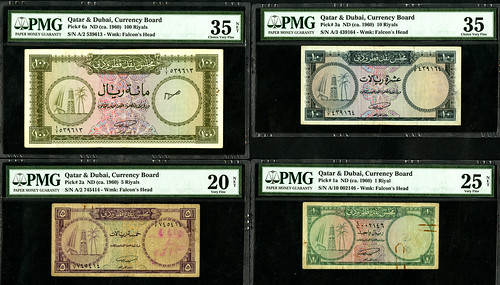
Lot 1728 Currency Board of Qatar & Dubai, ca. 1960, Issued Banknote Quartet
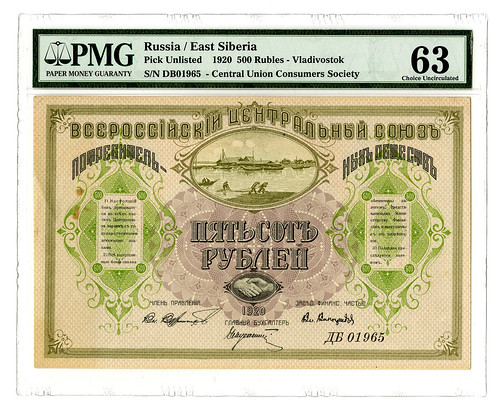
Lot 1740 All Russian Central Union of Consumer Societies, 1920 Issued Banknote
Additional highlights include the finest known graded 10 Shilling Treasury Note, ND (1914), PMG Gem Unc. 65 and a Russo-Asiatic Bank, 1 Gold Fen, 1913-1917 "Kuld'sha, Chuguchak & Kashgar" Issue Rarity.
The auction will feature hundreds of additional rare and desirable banknotes, bonds and shares in every price range, for the beginner to the advanced collector. Previews will be held at the Archives International Auctions offices in Fort Lee, on Wednesday, February 1st to Friday, Feb. 3rd Between 10:00 AM until 5:00 PM and by appointment. For an appointment call (201) 944-4800 or email info@archivesinternational.com. Check the AIA website for additional info.
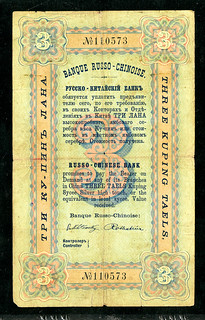
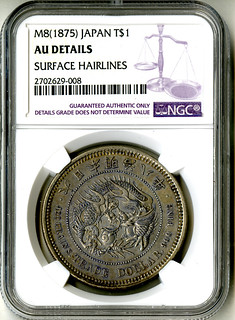
Lot 1114; Lot 1592 Japan 1 Yn Coin
The online catalogs for the Feb. 7th and 8th sales are on Archives International Auctions' website and can be viewed via the Archives International Live bidding platform. It can also be viewed as a virtual catalog or downloadable .pdf. To pre-register for live event internet bidding, you may log on to the Archives International Auctions website, at www.ArchivesInternational.com.
Archives International Auctions is currently seeking quality consignments for future auctions and is looking for U.S. and worldwide banknotes, coins, stocks, bonds, stamps, postal history, historic ephemera, autographs, and documents to buy outright. To sell or consign one piece or an entire collection, please call AIA at (201) 944- 4800; or e-mail them at info@archivesinternational.com.
You may also write to Archives International Auctions, at 1580 Lemoine Ave., Suite #7, Fort Lee, NJ 07024 U.S.A. To learn more about Archives International Auctions and the auctions planned for February 7 th and 8th and in December, log on to www.ArchivesInternational.com.

NUMISMATIC NUGGETS: JANUARY 29, 2017
1973 Salvador Dali Israel Medal Set
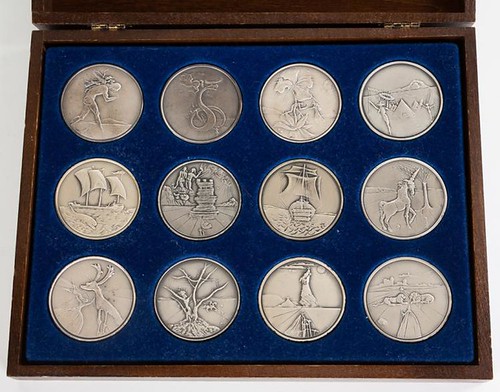
Description: A total .999 Fine Silver weight of 30.7 troy ounces. Israel's 25th Anniversary year. Each of the 12 Tribes of Israel (Asher, Benjamin, Dan, Gad, Issachar, Joseph, Judah, Levi, Naphtali, Reuben, Simeon and Zebulun) are depicted on 12 individual Silver Coins, each bearing an image created by Salvador Dali with the name of the tribe. On the edge of each medal is the inscription "Medallic Art Co, NY .999 + Pure Silver," along with a serial number.
Condition Report: Excellent
Dimensions: Dia. 2"
To read the complete lot description, see:
Lot 87: Salvador Dali (Spanish, 1904-1989) Homage to Israel, 1973 - Set of 12 Silver
Medals (www.invaluable.com/auction-lot/salvador-dali-spanish,-1904-1989-homage-to-isr-87-c-85a4ca38c9)
1929 Paris Vichy Auto Club Medal
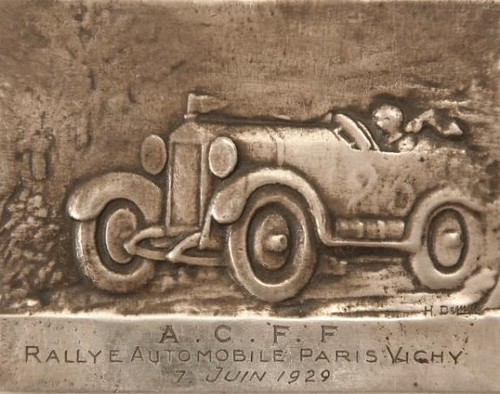
Description: Significant 1929 French plaque recognizing the A.C.F.F. automobile club rallye for females. Remember, back in the late 1920's automobiles were still somewhat new and a novelty. These were presented to the participants of the event and are quite rare.
Condition Report: Very Good
Provenance: France
Dimensions: 34(h) x 16(d) x 34(l) inches
Date: circa 1929
To read the complete lot description, see:
French 1929 Paris Vichy Auto Club Medal
(www.invaluable.com/buy-now/french-1929-paris-vichy-auto-club-medal-9ae4a528e3)
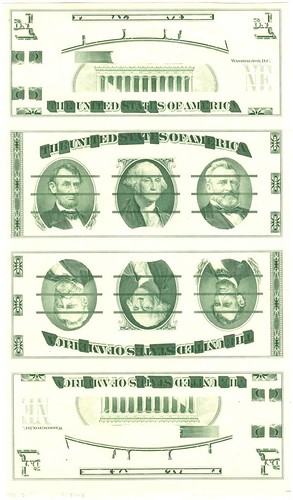 U.S. Giori Test Banknote Uncut Sheet
U.S. Giori Test Banknote Uncut Sheet
Rare U.S. Giori Test Banknote Uncut Sheet of 4. These were printed in Geneva, New York to evaluate the printing quality. The BEP released "nonsense" plates composed of cancelled portions of
printing plates from various denominations. This uncut sheet of 4 features the $1 and $5 denominations.
To read the complete lot description, see:
U.S. Giori Test Banknote Uncut Sheet of 4
(http://bid.seizedassetsauctioneers.com/U-S-Giori-Test-Banknote-Uncut-Sheet-of-4_i26566548)
Small Silver Medal of Karl II
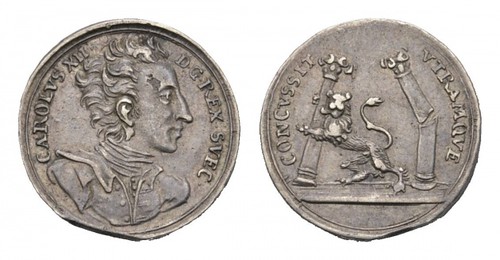
To read the complete lot description, see:
Karl XII., 1697-1718. Kleine Silbermedaille o. J. (1706), Hildebrand I (www.kuenker.de/en/elive-auction/stueck/145609)
Netherlands Liberation Day Medal
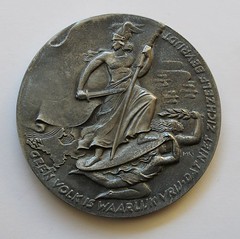
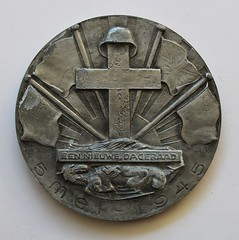
Medal in commemoration of Liberation Day, 5th of May, 1945.
Medallist: Marinus Kutterink (1907-1983) Material: Struck medal made of war metal Diameter: 70 mm
Obverse: The Dutch virgin, with the tricolour and a sword, standing on a shield, carried by two nymphs, with circumscription: 'Geen volk is waarlijk vrij, dat niet zichzelf bevrijdt'.
(No nation is truly liberated, if it does not liberate itself.)
Reverse: Wooden cross, covered with a Dutch soldier's helmet, surrounded with the flags of the Allies. Underneath this the words: 'een nieuwe dageraad' (a new dawn) and below that the war dragon, marked with a swastika.
To read the complete lot description, see:
165. The Netherlands – Medal 'In commemoration of
Liberation Day on the 5th of May 1945' – Bronze (https://auction.catawiki.com/kavels/9814949-the-netherlands-medal-in-commemoration-of-liberation-day-on-the-5th-of-may-1945-bronze)
E Pluribus Venom Note
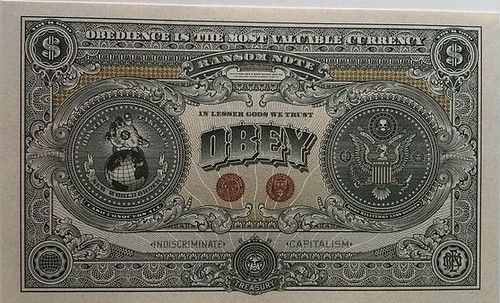
Oeuvre : E Pluribus Venom Note
Shepard Fairey "OBEY"
Dimensions: 14,5 x 8,7 cm (print).
Condition: In perfect condition
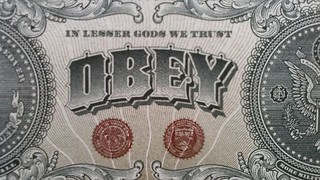 Double sided offset print. Mint Obey Currency from the E Pluribus Venom opening at the 2007 LeVine Gallery. Each side of the bill features one of Fairey's Two Sides of Capitalism images
(Good and Bad).
Double sided offset print. Mint Obey Currency from the E Pluribus Venom opening at the 2007 LeVine Gallery. Each side of the bill features one of Fairey's Two Sides of Capitalism images
(Good and Bad).
This banknote was made in small impression on the occasion of the exhibition "E Pluribus Venom" in New York in 2007 and referenced in the catalogue. High quality paper and detailed print that makes it really similar to a real currency. These notes were not intended for sale making it rare pieces hard to find at present.
To read the complete lot description, see:
145. Shepard Fairey (OBEY) - E Pluribus Venom
(https://auction.catawiki.com/kavels/9653019-shepard-fairey-obey-e-pluribus-venom)
1808 Quarter Eagle
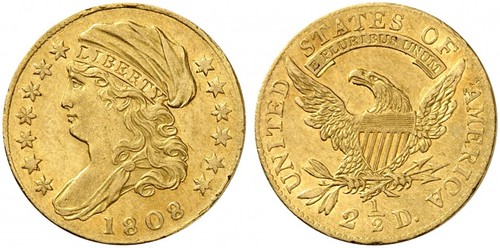
To read the complete lot description, see:
Föderation. 2 1/2 Dollars 1808, Philadelphia. Fb. 107. (www.kuenker.de/en/auktionen/stueck/140500)
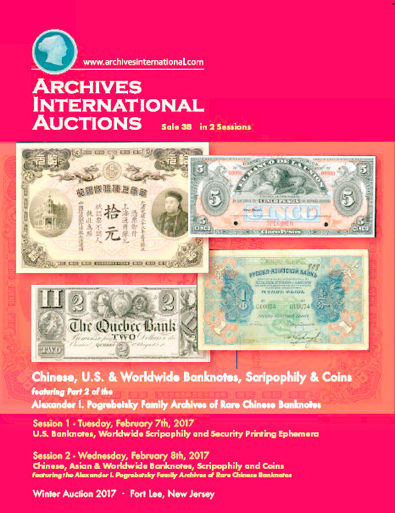
THE 2017 AMERICAN NUMISMATIC SOCIETY GALA
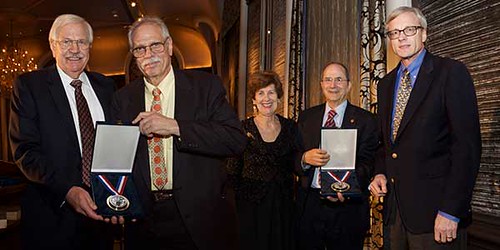
Syd Martin, Tony Terranova, Linda Newman Schapiro,
Kenneth Edlow and Len Augsburger
On Thursday, January 12, 2017, over 150 friends of The American Numismatic Society (ANS) gathered to honor Anthony J. Terranova, the Eric P. Newman Numismatic Education Society and the Newman Numismatic Portal with the Trustees' Award at the Annual Gala at the Waldorf Astoria Hotel in New York City.
Anthony Terranova, a noted collector, dealer, and researcher in numismatics, joined the Society 40 years ago. He was elected Fellow in 1992, became a Life Fellow in 1995, and has been a member of the Augustus B. Sage Society since 2006. He has greatly enhanced the ANS collections with important donations to the numismatic cabinet, and with many books, archives, and auction catalogues to the Harry W. Bass, Jr. Library, as well as with many generous donations. Known for his honest and fair dealings, encouragement, and engaging personality, the Society was delighted to acknowledge his exemplary devotion and commitment to numismatics through the presentation of the Trustees' Award by ANS Board President, Sydney Martin.
Kenneth Edlow, Chairman of the ANS Board, presented the Trustees' Award to the Eric P. Newman Numismatic Education Society and the Newman Numismatic Portal, accepted by Mrs. Linda Newman Schapiro and Mr. Leonard Augsburger, respectively.
The Newman Numismatic Portal (NNP), an online numismatic resource, is sponsored by a grant from the Eric P. Newman Numismatic Education Society, and works with the ANS on a scanning project that enables greater access to American numismatic research material on both the ANS Digital Library and Newman Portal websites.
To read the complete article, see:
American Numismatic Society Presents Trustees' Award at
2017 ANS Gala (www.coinweek.com/coin-clubs/american-numismatic-society/american-numismatic-society-presents-trustees-award-2017-ans-gala/)
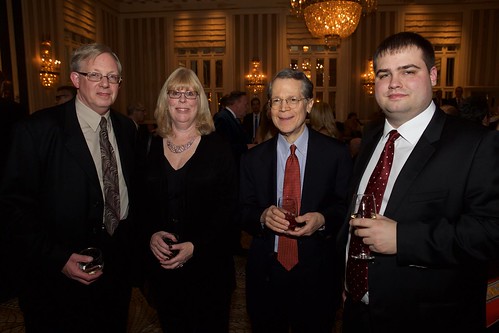
Wayne and Dee Homren, Mark Tomasko, Ben Hellings
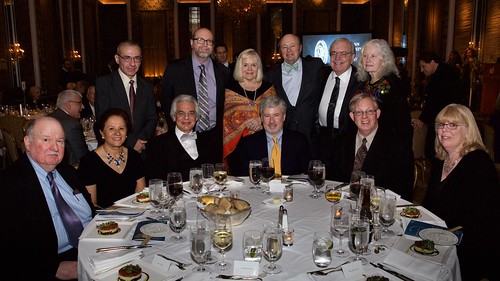
I'm sorry I can't recall everyone's names, but here's our table posing with John and Regina Adams. Seated from left: Former ANS Librarian Frank Campbell and his guest, John Lupia, John Sallay, Wayne and Dee Homren. Back center, 2nd from left: David Fanning, Regina and John Adams.
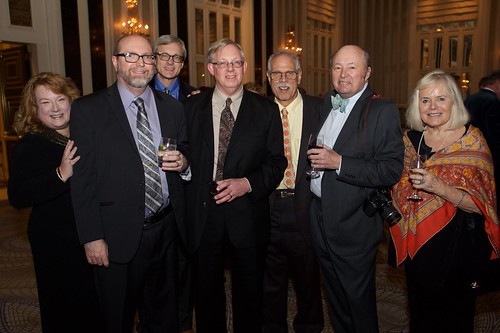
Deb Kurtz, David Fanning, Len Augsburger, Wayne Homren,
Tony Terranova, John and Regina Adams
To read the earlier E-Sylum article, see:
WAYNE'S NUMISMATIC DIARY: JANUARY 22, 2017 (www.coinbooks.org/v20/esylum_v20n04a27.html)
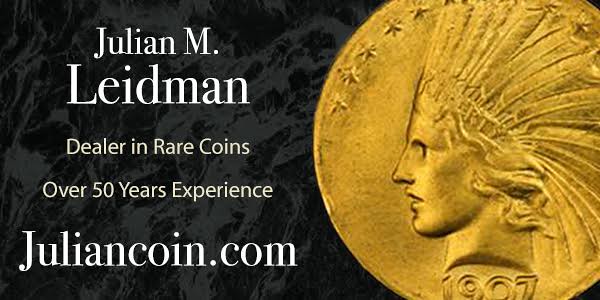
MONEYERS AND DEBASEMENT IN MEDIEVAL ENGLAND
"All the moneyers who were in England should be mutilated"
This was the order given by King Henry I in 1125. Specifically, they should each "lose their right hand and be castrated."1 According to the Anglo-Saxon Chronicle, Bishop Roger of Salisbury rounded up the moneyers in the city of Winchester and carried out the grizzly order. Henry actually had a history of difficulty with the mints of England. Around 1108, Henry ordered that all coins from the mint should be 'snicked;' cut or mutilated before leaving the mint.
The coins in circulation were being cut to test their purity, and this caused many to not accept the coins, since portions were cut off and made the coins a lesser weight. Henry's solution was for the creation of round half-pennies, and for every full penny to come pre-cut.
In the case of 1125, the Coinage was becoming very debased. In fact, the Chronicler praises Henry's punishment of the moneyers, saying the action was justified because "the man who had a pound could not get a pennyworth at a market." In some ways, the moneyers almost couldn't be blamed. There had not been any serious silver deposits found in Europe since 1040, and the silver of Europe was primarily draining towards Italy and the East through trade.
The silver supply would be further strained by the continued Anglo-Saxon practice of requiring a recoinage every few years. By only permitting the newest type to be used to pay fines or royal rents, this required people to exchange their coins, and the moneyers could charge a fee for the privilege. A portion of that fee would go to the king, and if a lower finesse was used in the new coinage, then more profits could be made. People would naturally hold on to older, more fine coins for personal transactions, and it would seem to the moneyers that the supply of silver was seriously dwindling.
The documentary evidence of Henry's decree concerning the moneyers lends evidence to dating his coins. M.A.S. Blackburn conducted a study of the types of Henry's coins and attempted to lend a chronology to them.6 One of the few certain types were those of 'Type 15' containing a Quadrilateral on Cross Fleury on the reverse. These are fairly certain to have been minted after the purge of the moneyers in 1125, as the number of mints and moneyers who produced these coins dropped dramatically from previous issues. I managed to stumble across one of these type 15 coins recently. It's certainly not pretty, but few of the affordable issues of Henry I are. While the flan is very irregular and damaged, the king's portrait is clear, and there is just enough of the legend on the reverse to make out the mint and moneyer.
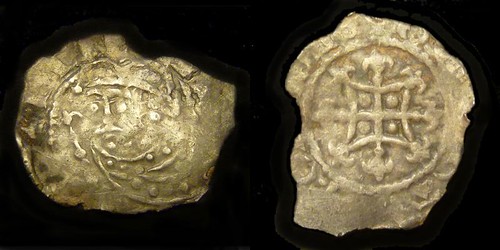
Henry I, Bury St. Edmunds AR Penny
The order to mutilate the moneyers seems to have come as a result of events happening in Normandy. Henry had wrested the Duchy from his eldest brother, Robert Curthose, when the latter went off on Crusade. Robert's son, William Clito, naturally resisted when given the opportunity. According to Robert de Torigni, a chronicler from Mont St. Michel, some money from England had arrived to pay his soldiers who were fighting Clito and a rebellious count.
According to de Torigni, "...almost all the moneyers of the English kingdom produced, I do not know by what wicked perversity, money out of tin containing scarcely one-third of silver, whereas it should have consisted of pure silver." This is interesting not only because de Torigni is another chronicler who praised Henry's actions, but that we have another reason why silver was leaving England. Normandy had their own coinage, and were not reliant on England to provide pay for soldiers.
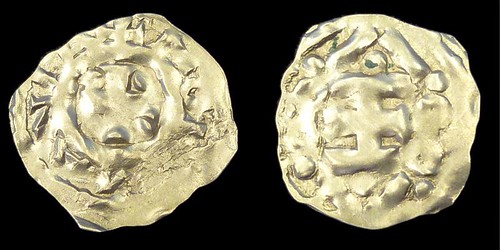
French Feudal, Normandy Henry I, r. 1106-1135
To read the complete article, see:
Medieval - "All the moneyers who were in England should be mutilated"
(Cited from: https://www.cointalk.com/threads/medieval-all-the-moneyers-who-were-in-england-should-be-mutilated.290165/)
(www.cointalk.com/threads/medieval-all-the-moneyers-who-were-in-england-should-be-mutilated.290165/)
THE 1632 PURIM TALERS
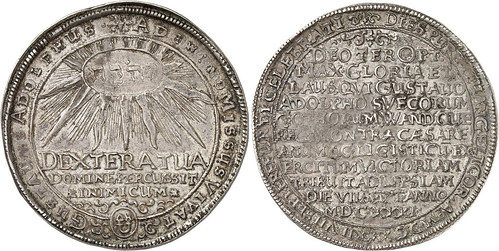
Lot 1225: Erfurt. Thaler 1632.
Purim taler: “Collectors' term for a 1632 taler from Erfurt, dating from the time of the Swedish occupation, issued on the occasion of a so-called Purim festival, to celebrate the “affirmed Evangelic faith”, on 7 September 1632. The taler received its name from the beginning of the reverse's legend DIES PVRIM (Lat. ‘day of Purim').” This is how the relevant entry in Helmut Kahnt's 2005 “Großes Münzlexikon“, page 369, reads. Some things remain open, though, for example why, in 1632, the city of Erfurt celebrated a Jewish festival.
The historical situation
Erfurt faced a problem. As early as 1577, the government of the city had signed the Formula of Concord, thus confirming its conversion to the Protestant faith. But Erfurt was no free imperial city.
It was subject to a sovereign, the Catholic archbishop of Mainz, of all people. This was anything but a comfortable position. Although the two parties managed to negotiate a compromise – the citizens
of Erfurt were granted free choice of faith and the city in turn did not strive at becoming a free imperial city, this was a labile compromise. Erfurt was neither foe nor friend which became clear to
the citizens by the mere fact that, at the beginning of the Thirty Years' War, the imperial soldiers pillaged their city repeatedly – despite the Erfurt Council having spent much money on acquiring
writs of protection from the emperor.
Then, in 1631, Swedish King Gustavus Adolphus prevailed near Breitenfeld, and everything was all right. On 2 October, he entered Erfurt. On 4 October, the Erfurt Council swore the oath of fealty to him. The city had a new lord – this time, a Protestant one.
The Protestants annex the cathedral
On his entry, Gustavus Adolphus had assured the Catholics of his protection. To the annoyance of the Protestants who were not able to hold their service in the largest church of the city. And so the
council planned a coup in which Gustavus Adolphus would not interfere. On 30 August 1632, the council passed a “Christian order” to celebrate the victory of Gustavus Adolphus near Breitenfeld in all
churches of Erfurt – including the Catholic Cathedral – on 6 September. The festivities were to be repeated annually.
The cathedral's chapter received the meagre information that it was planned to hold services in the cathedral according to the Protestant way in the future. After all, they were told, that had been done before (though nobody mentioned that this had been during the 1525 Peasants' War).
The canons of course complained to the Swedish resident. But he refused to intervene: Naturally, he didn‘t want to force the cathedral's chapter, but it would be so much better if things could be settled with the council peacefully.
Obviously, that didn't work. In the morning of 7 September 1632, representatives of the council forced the cathedral's doors open. Thousands of Protestants flocked into the church, to celebrate “their” service.
How the annexation of the cathedral became the Purim festival
The strident pastor Valentin Wallenberger gave the feast-day sermon. He compared the commemorative service of the Battle of Breitenfeld with the Jewish Purim festival. The Jewish woman Esther had saved the Jews from being annihilated by the Persians in the same way as, through the Battle of Breitenfeld, Gustavus Adolphus had saved the Protestants from being annihilated by the Catholics.
Following the service, a “Resurrection festival” of the Catholic university was celebrated that marked a change to the Protestant doctrines. Of course there were violent incidents – directed at the Catholics and their property but representatives of the council intervened and limited the damage.
Thus, it was never about a Jewish feast in Erfurt, but about the Protestants retrieving the most important buildings of their city from the Catholics. The relevant news travelled to all other Protestant cities, as did a print of Valentin Wallenberger's sermon.
The Purim talers
As a commemoration, the Purim talers were issued. On the reverse, they bear the Latin wording “Thy right hand, o Lord, has dashed in pieces the enemy”, a quote from Exodus 15:6 that applies equally
well to both the Erfurt Catholics and their enemies that Gustavus Adolphus had crushed in the Battle of Breitenfeld.
The reverse translates as: “Purim day of the Evangelicals in 1632, celebrated in Erfurt on 7 September. / Honor and praise be unto God, three times the best and greatest, who had granted Gustavus Adolphus, King of the Swedes, Goths and Wends, victory over the Imperial and the League army near Leipzig on 7 September 1631.”
Therefore, it falls too short to think of the Purim talers as a commemorative striking only. They were definitively minted after the events at Erfurt, thus after 7 September 1631, and take up the sermon given by Valentin Wallenberger. In the bad time following the death of Gustavus Adolphus, they reminded the Protestants that the Lord had once sent them a hero to their rescue and might send that hero again at any time.
To read the complete article, see:
The Purim Festival of the Protestants
(www.kuenker.de/en/information/presseinformationen/aktuelle-mitteilungen/107)
 More than 2,000 people rallied in St. Petersburg on Saturday to protest plans by the city authorities to give a landmark cathedral to the Russian Orthodox Church amid an increasingly
passionate debate over the relationship between the church and state.
More than 2,000 people rallied in St. Petersburg on Saturday to protest plans by the city authorities to give a landmark cathedral to the Russian Orthodox Church amid an increasingly
passionate debate over the relationship between the church and state.
“We won't give St. Isaac's to the church. We want to save it as a museum,” Boris Vishnevsky, a local lawmaker, told protesters in central St. Petersburg.
“St. Isaac's Cathedral is part of our cultural heritage. There are so many valuable exhibits that require the work of museum specialists. The Russian Orthodox Church does not have those specialists,” said Irina Azbel, 43, a doctor, who was among those protesting.
A few dozen counterprotesters gathered in the same place to support the plans. “The return of the cathedral to the church is a return to our national roots,” said Yelena Semyonova, 52, a professor.
The announcement earlier this month that the neoclassical St. Isaac's Cathedral, which is run as a museum, will be put under Orthodox Church ownership has sparked a backlash from city residents. More than 200,000 people have signed an online petition calling on the city authorities to reconsider.
To read the complete article, see:
Over 2,000 people rally
against Russian cathedral handover
(www.washingtonpost.com/world/over-2000-people-rally-against-handover-of-cathedral-in-st-petersburg/2017/01/28/74bf16b8-e5a2-11e6-a547-5fb9411d332c_story.html)
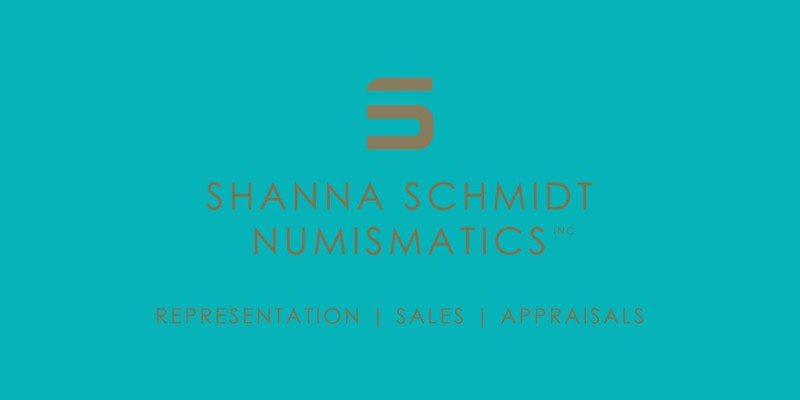
LORD CLIVE RECOVERY TO BEGIN FEBRUARY 2017
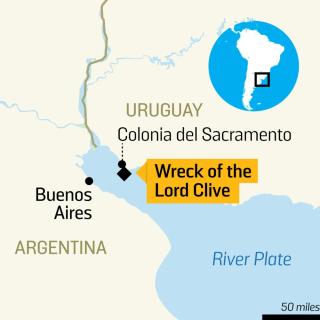 Since it was sunk more than 250 years ago by Spanish cannon fire, the Lord Clive has lain off the southwest coast of Uruguay.
Since it was sunk more than 250 years ago by Spanish cannon fire, the Lord Clive has lain off the southwest coast of Uruguay.
But next month a treasure hunter from Argentina will attempt to haul the British privateer out of the water — and with it, he hopes, £1bn of gold bullion thought to be on board.
Ruben Collado, who discovered the wreck in 2004 and is now leading the operation to raise it, said the coins could be worth €1.2bn. “And that is without considering goods such as rum, opium and silk stored in lead pipes,” he added.
On February 10 he will send a team of divers into the estuary of the River Plate to begin the recovery of the 64-gun vessel, a former Royal Navy ship built in Hull that sailed to South America on behalf of the East India Company to bring funds and men for British military campaigns.
The ship was sunk by cannon fire in 1763 at the end of the Seven Years' War during an attempt to retake Colonia del Sacramento, a former colony of Britain's ally Portugal, which had been seized by the Spanish.
The wreck, which lies 380 yards off the coast, is just 16ft down. But the Spanish loaded rocks on top of its hull to prevent it from floating to the surface, complicating its recovery. Collado estimates the operation will require a team of 80 divers, technicians and support staff and cost £4m.
Collado says the effort is worth it not only for the ship's riches, but also for its cultural significance, arguing that its sinking changed the course of Latin American history.
“If that ship had not failed in its attempt to retake the city of Colonia del Sacramento, today we could be speaking English throughout Latin America,” he said in an interview in 2015.
To read the complete article (subscription required), see:
Up she rises: £1bn in sunken British gold
(www.thetimes.co.uk/article/up-she-rises-1bn-in-sunken-britishgold-5mrv6rqkh)
To read the earlier E-Sylum article, see:
TREASURE HUNTER SEEKS SUNKEN BRITISH SHIP OFF URUGUAY (www.coinbooks.org/esylum_v18n46a30.html)
To read the complete article, see:
Treasure hunter plans to land £1BILLION gold bullion haul by bringing 250-year-old
British ship to the surface (www.dailymail.co.uk/news/article-4169018/Treasure-hunter-plans-land-1BILLION-gold-bullion-haul.html)
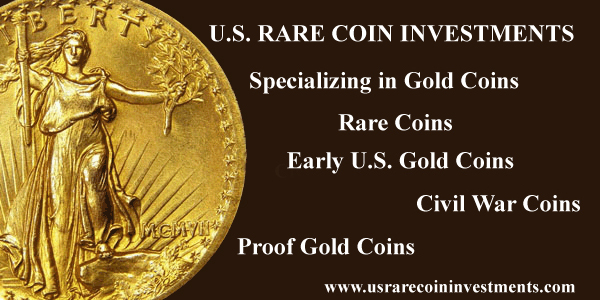
THE FIRST 1794 DOLLAR RELEASED
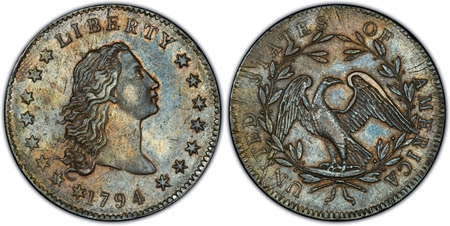
Introduction – October 15, 1794 On October 15, 1794, 1,758 dollars were transferred from the custody of Chief Coiner Henry Voigt to the custody of Treasurer of the Mint Dr. Nicholas Way. This was done per Delivery Warrant #1, as ordered by Director of the Mint David Rittenhouse.
Very little is known about when the 1,758 1794 dollars were released from the Mint. In his reference book, “Die Varieties of Early United States Coins”, Robert Hilt II stated:
Mint records, now in the national archives, show that the second and third deposits of silver at the mint were made by the director David Rittenhouse… Furthermore, Rittenhouse received part of his payment in dollars and in the exact amount of dollars comprising the first delivery of dollars on October 15, 1794 a total of one thousand seven hundred fifty eight (1,758) dollars
Recently, I came across a document that was written on October 16, 1794. Based on my analysis of numismatic articles, books, and other publications, I believe this document has never before been published to the numismatic community.
On October 16, 1794, Secretary of State Edmund Randolph wrote the following letter to President George Washington. Note paragraph 2:
Sir
...
The silver coin of the U.S. bears upon its face so much neatness and simplicity, that I cannot restrain myself from transmitting a dollar for your inspection.
...
Edm: Randolph
How Did Edmund Randolph Receive That 1794 Dollar?
In order for Edmund Randolph to have sent a 1794 dollar to President Washington on October 16, 1794, that 1794 dollar must have been returned to a silver bullion depositor, then provided to Edmund
Randolph, who in turn forwarded it to the President.
Since 1,758 dollars were delivered to the custody of Treasurer of Mint Dr. Nicholas Way on October 15, 1794, the silver bullion used in those dollars had to have been deposited with the Mint prior to October 15, 1794. There were 6 silver bullion deposits made prior to October 15, 1794. See Figure 2. The depositors, dates of their deposits, and the value of their deposits in United States money were as follows:
1. Bank of Maryland, July 18, 1794, $80,414.30 ½.
2. David Rittenhouse, August 22, 1794, $1,706.82 ½.
3. David Rittenhouse, August 22, 1794, $294.51 ½.
4. Charles Gilchrist, August 22, 1794, $1,306.73.
5. Charles Gilchrist, August 22, 1794, $46.90.
6. The Bank of North America, August 23, 1794, $22,236.63.
Note that the entries in the Register of Silver Deposits for the Bank of Maryland's and Bank of North America's silver bullion deposits were incorrect. They were corrected on August 24, 1794 due to the “inaccuracy of the Avoirdupois weights”.
Since the Bank of Maryland made the 1st silver deposit and David Rittenhouse made the 2nd and 3rd silver deposits, I have devised four possible scenarios that could have resulted in Edmund Randolph forwarding a 1794 dollar to President Washington.
To read the complete article, see:
The First 1794 Dollar Released From The Mint
(https://gallery.mailchimp.com/74a0e3c37d154d935bdeb2daf/files/9a626f03-d2d7-4067-8a0d-26f1ddfb8697/DJF_Mint_First_1794_Dollar_Release.pdf)
HOW AMERICA PAID FOR THE CIVIL WAR
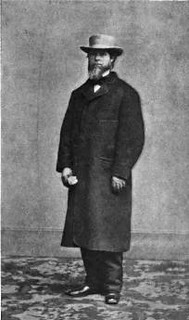 Philadelphia's Jay Cooke, who became the wealthiest man in America before losing most of his fortune in the Panic of 1873, was the person most responsible for raising money for Abraham
Lincoln and the North at that perilous early moment when the country only had $1.7 million in hand. He did it through a powerful innovation -- instead of trying to sell the bonds just to the wealthy
and to institutions, he assembled a large sales team and sold bonds to the middle class. In the final tally, over 500,000 individuals bought war bonds, establishing a precedent that was successfully
followed in both World War I and World War II:
Philadelphia's Jay Cooke, who became the wealthiest man in America before losing most of his fortune in the Panic of 1873, was the person most responsible for raising money for Abraham
Lincoln and the North at that perilous early moment when the country only had $1.7 million in hand. He did it through a powerful innovation -- instead of trying to sell the bonds just to the wealthy
and to institutions, he assembled a large sales team and sold bonds to the middle class. In the final tally, over 500,000 individuals bought war bonds, establishing a precedent that was successfully
followed in both World War I and World War II:
"Jay [Cooke]'s tiny banking house [in Philadelphia] opened just as the Civil War began, The first lengthy conflict of the industrial era, the war forced both sides to design, construct, and operate effective logistical systems as well as to raise money systematically. Besides raising taxes, another option was to print paper money and hope for battlefield success. This salutary approach (if one is not upset by inflation) worked quite well for the South but proved flawed after Gettysburg and Vicksburg. Unfortunately for the North, the Treasury had just $1.7 million in hand when Lincoln took office and was soon spending a million dollars a day. Given the lack of cash and what little tariffs and fees brought in, the federal government decided to assume a 90-day war.
"Neither [Treasury Secretary Salmon] Chase nor Lincoln wanted to finance the war by printing money or adding high income taxes; so they temporized, attempting to sell bonds.
"Following Fort Sumter, Cooke was determined to assist the North. ... While most Northern states gave the federal government men, equipment, and cash, Pennsylvania, which had promised 10,000 troops, was stymied because of previous bond defaults. Cooke volunteered to sell the bonds but was rebuffed. He then watched helplessly as the state's financial officials discovered that they could not sell the bonds. Finally, they sheepishly came back to him. Upon receiving approval on May 28, Cooke charged ahead with his old friend Anthony J. Drexel, Philadelphia's dominant banker. In three weeks they sold over $3 million in bonds. Cooke himself subscribed $10,000, which became public knowledge and added to the public's faith in him: he sold only securities in which he also invested.
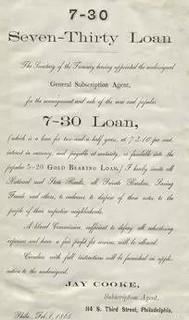 "On July 21, 1861, the North was defeated at Bull Run. Federal censors tried to block the news, but a Philadelphia Inquirer reporter slipped back into Philadelphia the next morning.
The news quickly spread, and businessmen wandered the streets in shock. Cooke, as surprised as anyone, swung into action. Instead of trying to gloss over the battle, he made it a rallying cry, just
as the Alamo had been or Pearl Harbor and the World Trade Center would be. Going from one downtown office to another, Cooke had $l.75 million in pledges by noon, twenty hours after the battle's
end. He instantly became a national hero and knew he had a workable formula, whereas Chase saw a competitor grabbing headlines. Probably prodded by Lincoln, Chase took Cooke with him to New York in
August as the government tried to raise $50 million.
"On July 21, 1861, the North was defeated at Bull Run. Federal censors tried to block the news, but a Philadelphia Inquirer reporter slipped back into Philadelphia the next morning.
The news quickly spread, and businessmen wandered the streets in shock. Cooke, as surprised as anyone, swung into action. Instead of trying to gloss over the battle, he made it a rallying cry, just
as the Alamo had been or Pearl Harbor and the World Trade Center would be. Going from one downtown office to another, Cooke had $l.75 million in pledges by noon, twenty hours after the battle's
end. He instantly became a national hero and knew he had a workable formula, whereas Chase saw a competitor grabbing headlines. Probably prodded by Lincoln, Chase took Cooke with him to New York in
August as the government tried to raise $50 million.
To read the complete article, see:
HOW AMERICA PAID FOR THE CIVIL WAR -- 1/25/17 (www.delanceyplace.com/view-archives.php?p=3254)
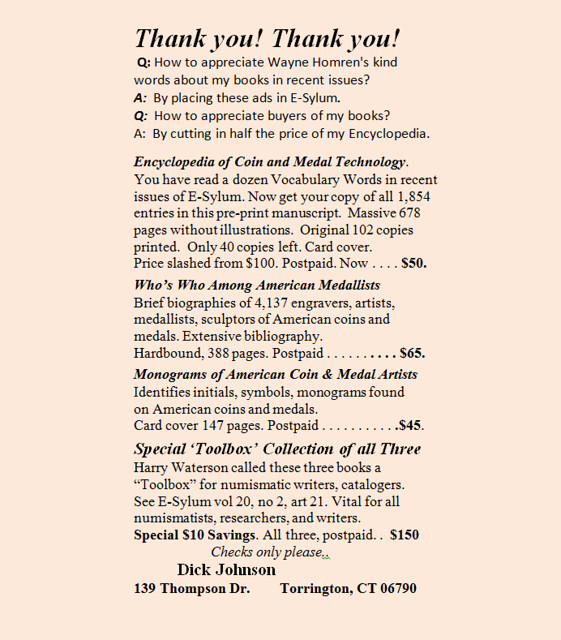
THE RECTOVERSO TECHNIQUE ON INDONESIAN BANKNOTES
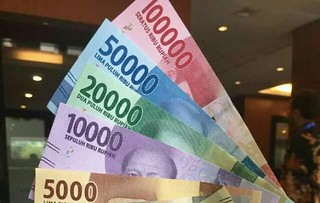 Bayu Martanto, Head of Representative Office of Bank Indonesia (BI) for Bangka Belitung province, said the printing of rupiah banknote uses a security technique called rectoverso to prevent
the banknote from being easily imitated or faked.
Bayu Martanto, Head of Representative Office of Bank Indonesia (BI) for Bangka Belitung province, said the printing of rupiah banknote uses a security technique called rectoverso to prevent
the banknote from being easily imitated or faked.
“Rectoverso is a special printing technique on a banknote which makes an image fill in for another image. An image at the same position is printed on the front and is printed on the back,” Bayu said. as quoted by Antara.
The image looks irregular if viewed from one side only, and the original image is only visible when the banknote is displayed in overlay. “In the rupiah banknote, the image will form the logo BI, short for Bank Indonesia. With the rectoverso technique, part of the image on the banknote will look irregular when viewed from one side, but will show a clear and intact picture when highlighted or displayed on overlay,” he said.
Bayu continued that Rectoverso technique had been applied in printing rupiah banknotes since 1993, while Bank Indonesia's logo has been used in the technique since 2001.
In addition, BI has officially published eleven rupiah banknote denominations for 2016 edition, consisting of banknote bills for 100,000, 50,000, 20,000, 10,000, 5,000, 2,000, and 1,000 denomination, as well as coins in the denomination of 1,000, 500, 200, and 100.
To read the complete article, see:
BI Affirms Usage of Rectoverso Technique on New Rupiah Banknotes
(www.en.netralnews.com/news/business/read/814/
bi.affirms.usage.of.rectoverso.technique.on.new.rupiah.banknotes)
AFGHANISTAN PLAGUED WITH OLD WORN BANKNOTES
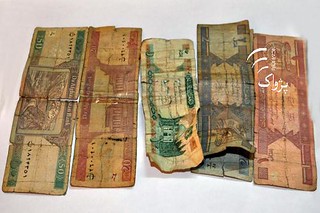 Several residents of capital Kabul complain about problems they face in using old banknotes for daily transactions.
Several residents of capital Kabul complain about problems they face in using old banknotes for daily transactions.
The Afghan currency notes come in dominations including one, two, five, 10, 20, 50, 100, 500 and 1,000 afghanis and coins of one, two and five afghanis.
Edris Ahmad, a resident of Qala-i-Wahid area of Kabul city, told Pajhwok Afghan News that old and rusty banknotes of one to 50 afghanis were in abundance in the market.
“I have several times clashed with shopkeepers and taxi drivers over old banknotes,” he said.
Hashmatullah Bayan, a member of the Wolesi Jirga commission on legislation, also said most banknotes from one to 50 afghanis had become unusable.
He confirmed facing problem in buying things in the market by offering old notes to shopkeepers.
“This problem often leads to verbal exchanges between customers and sellers. Wholesalers do not take old banknotes from me, so I also do not accept such banknotes from customers,” he said.
Javid said moneychangers also bought worn banknotes at lower prices compared to their normal rates.
To read the complete article, see:
Kabulis uneasy with increasing old banknotes
(www.pajhwok.com/en/2017/01/28/kabulis-uneasy-increasing-old-banknotes)



